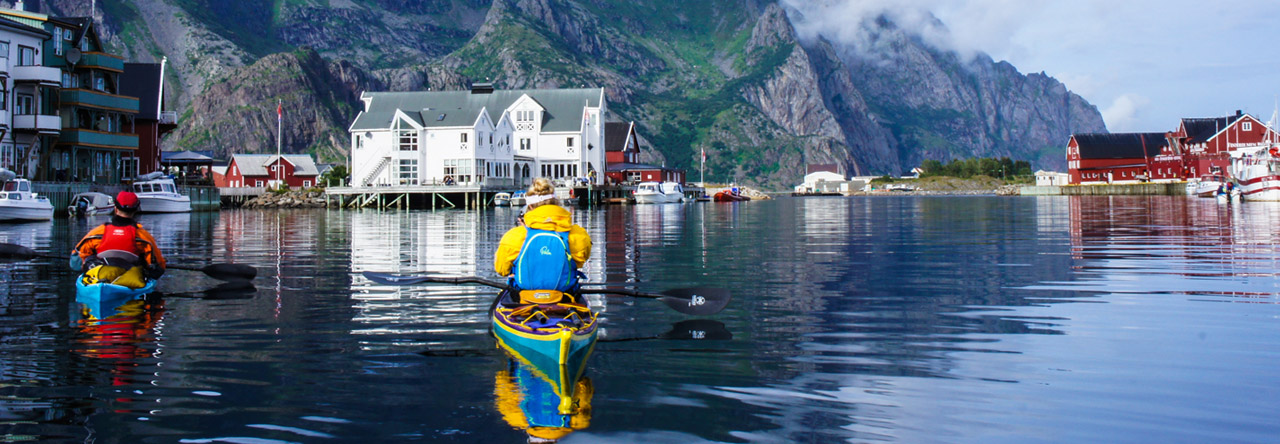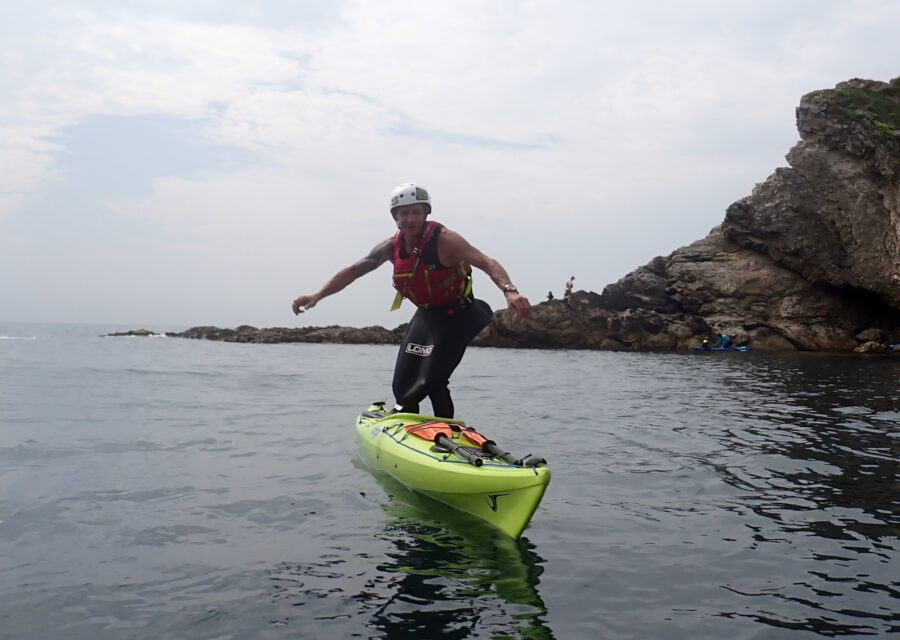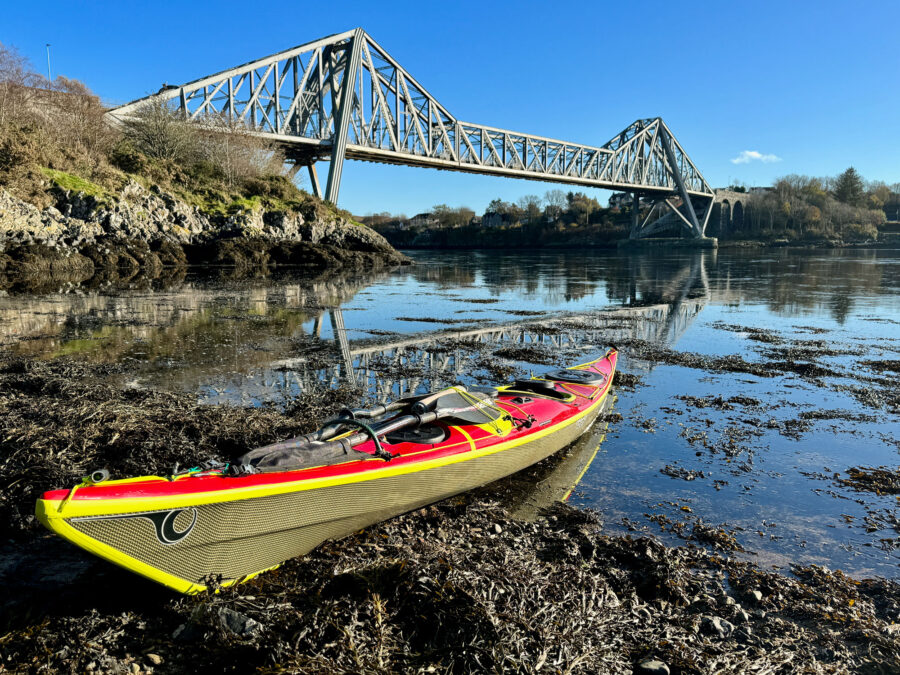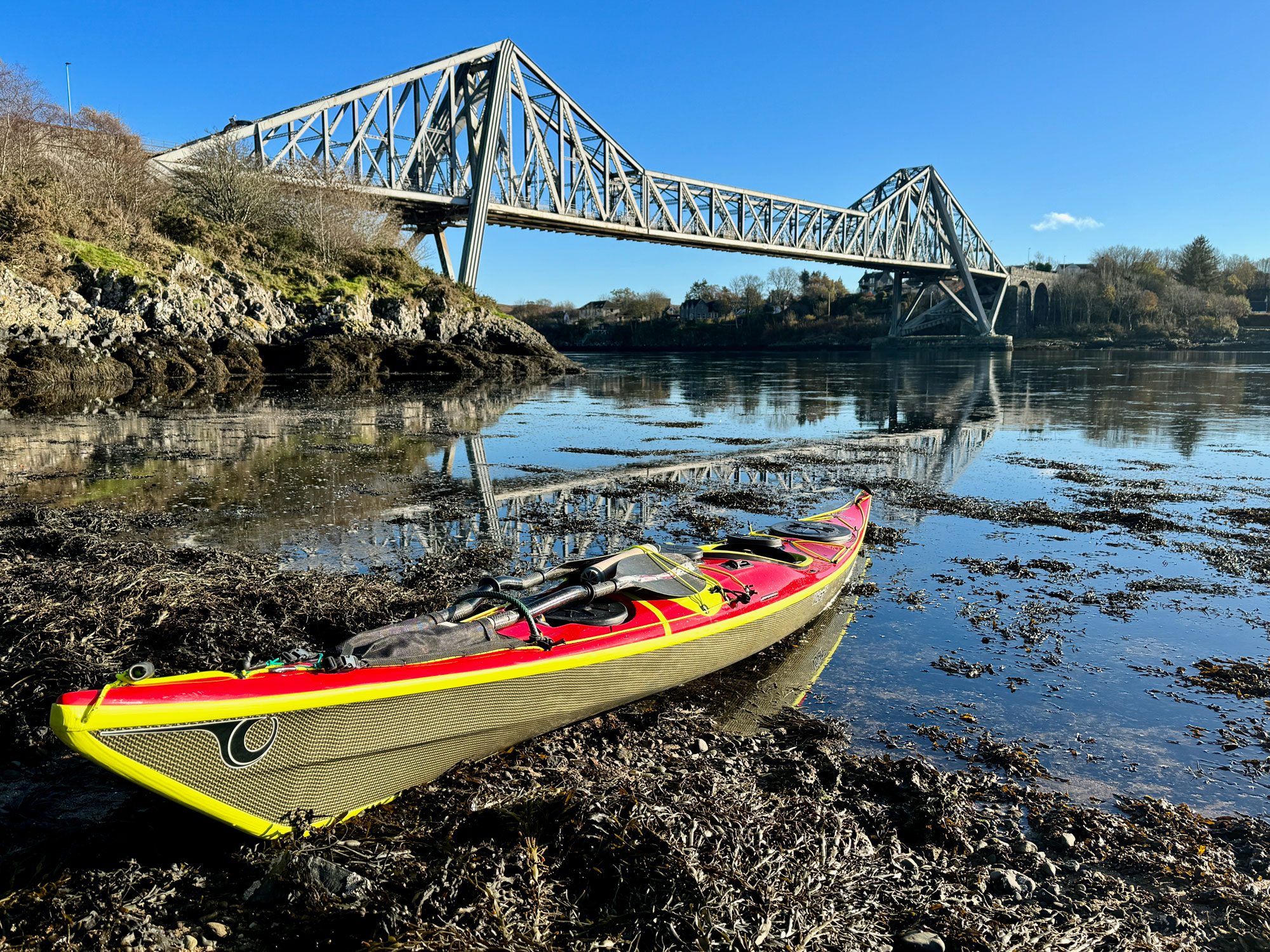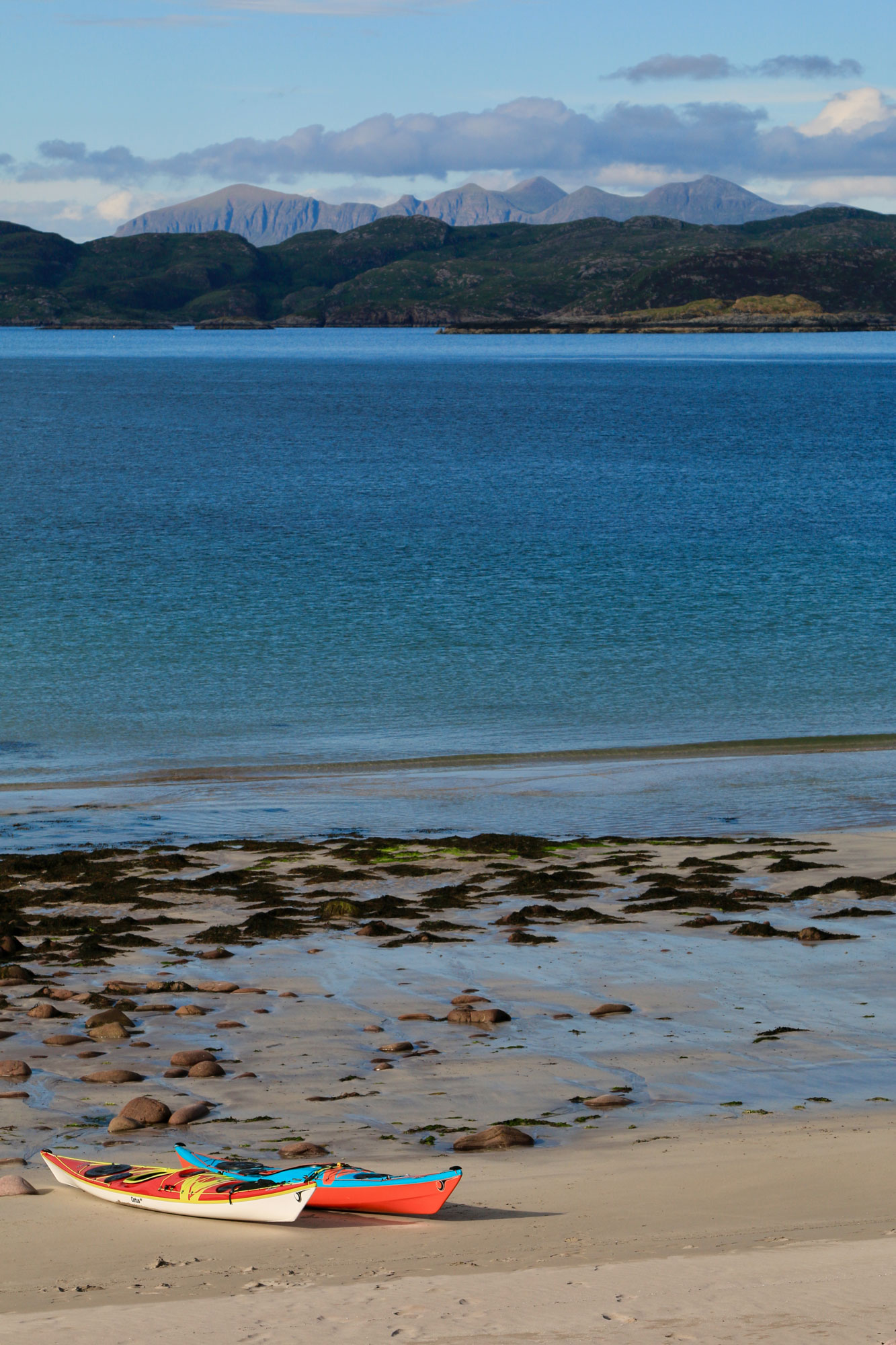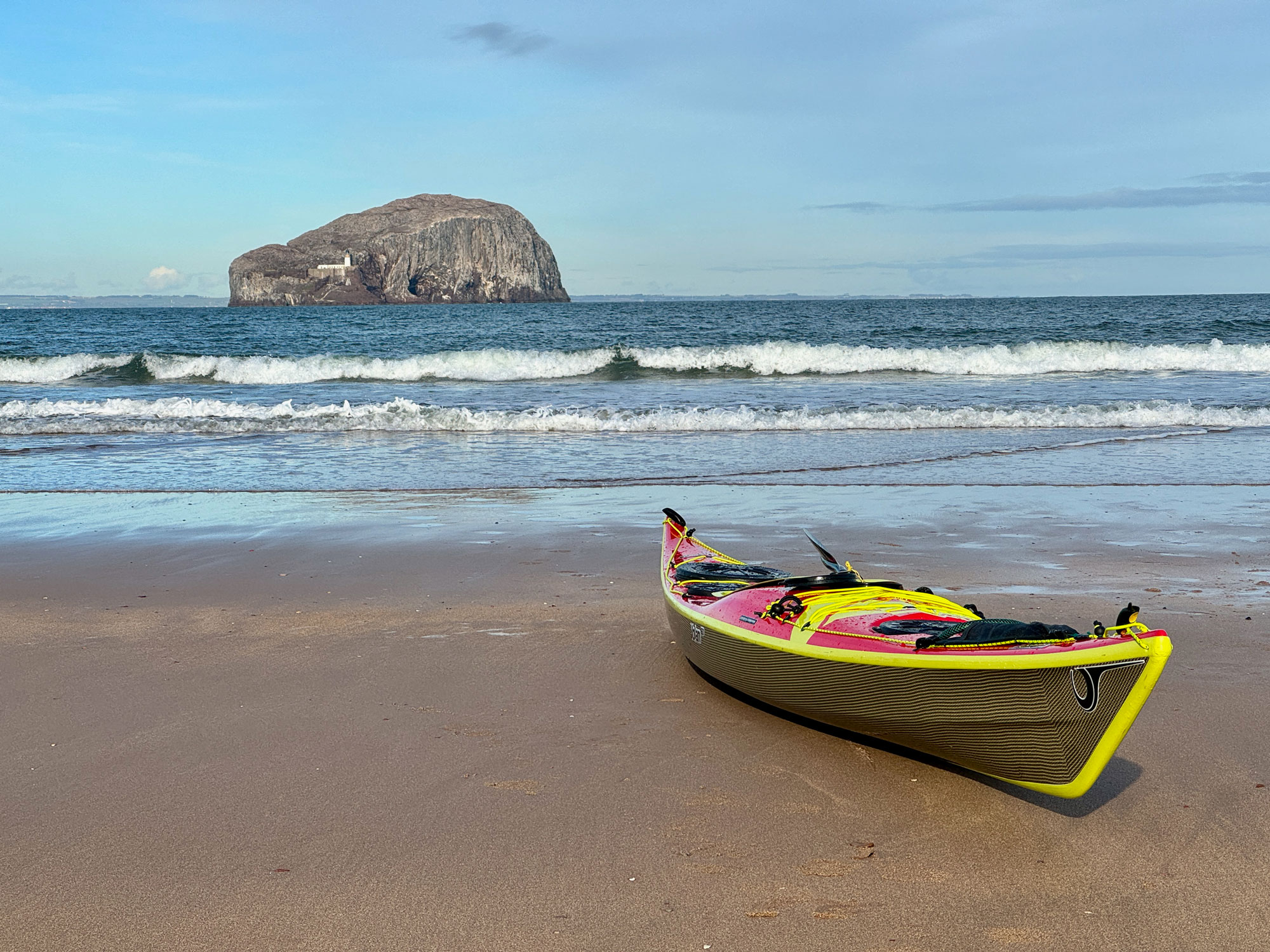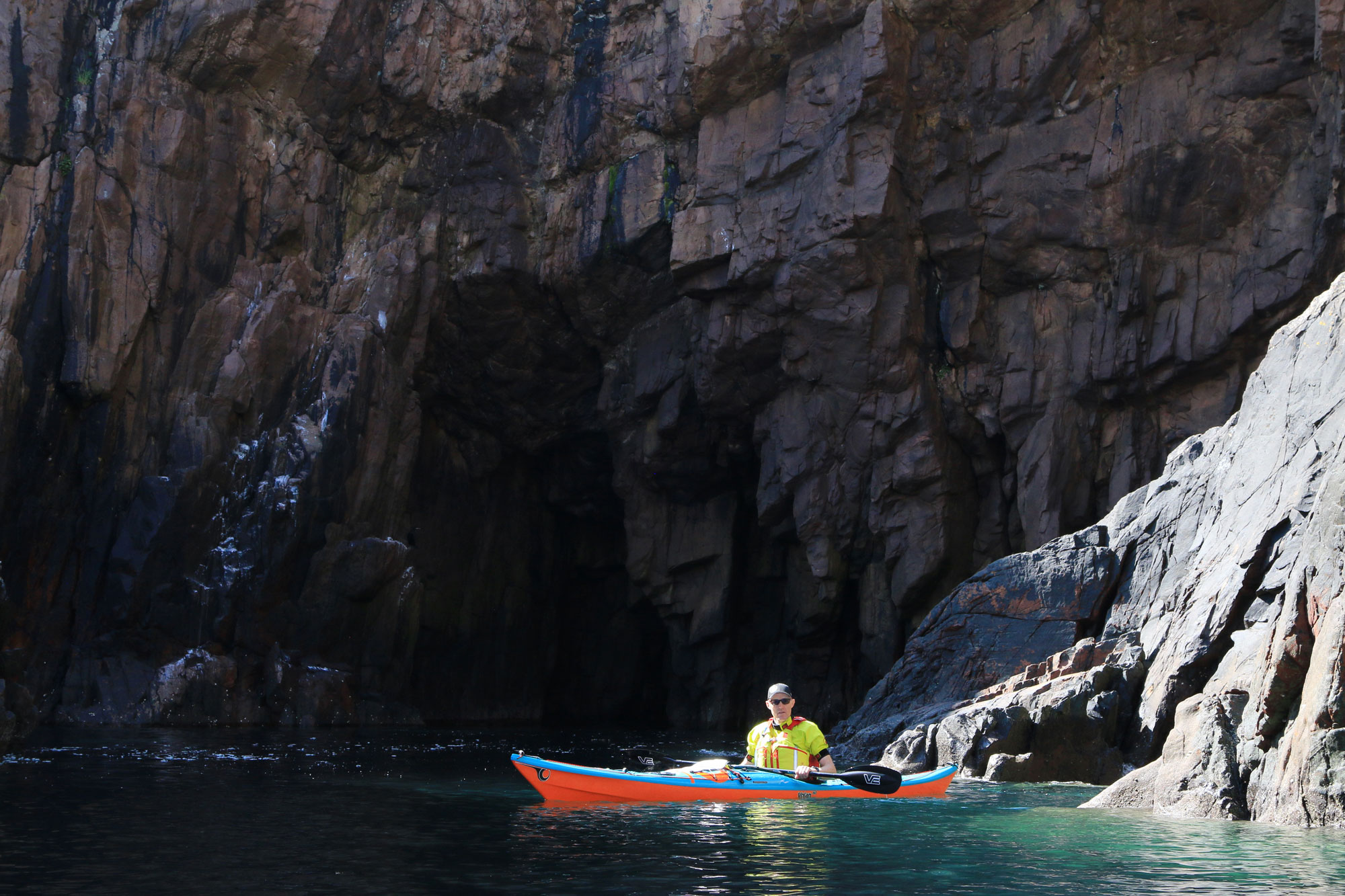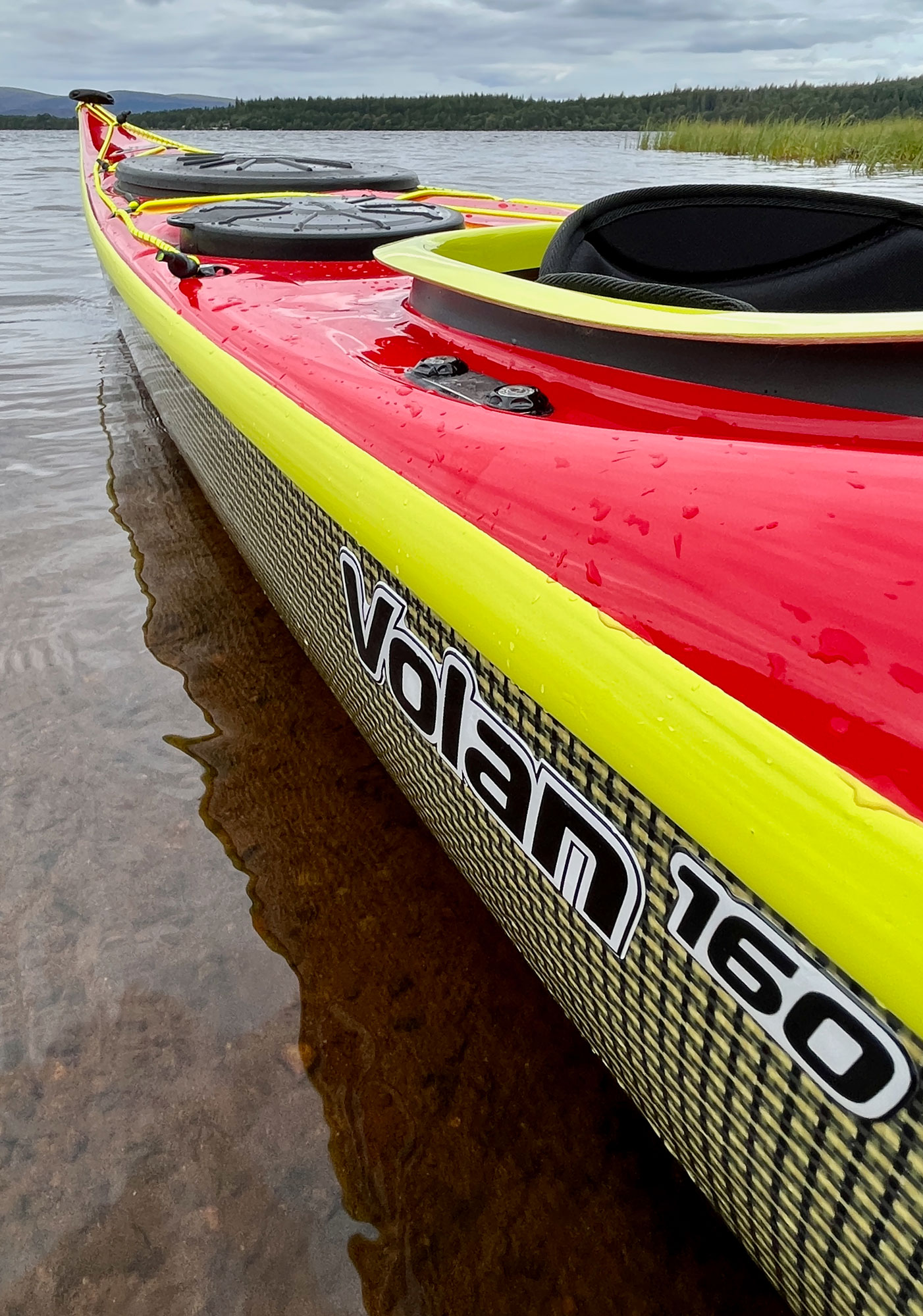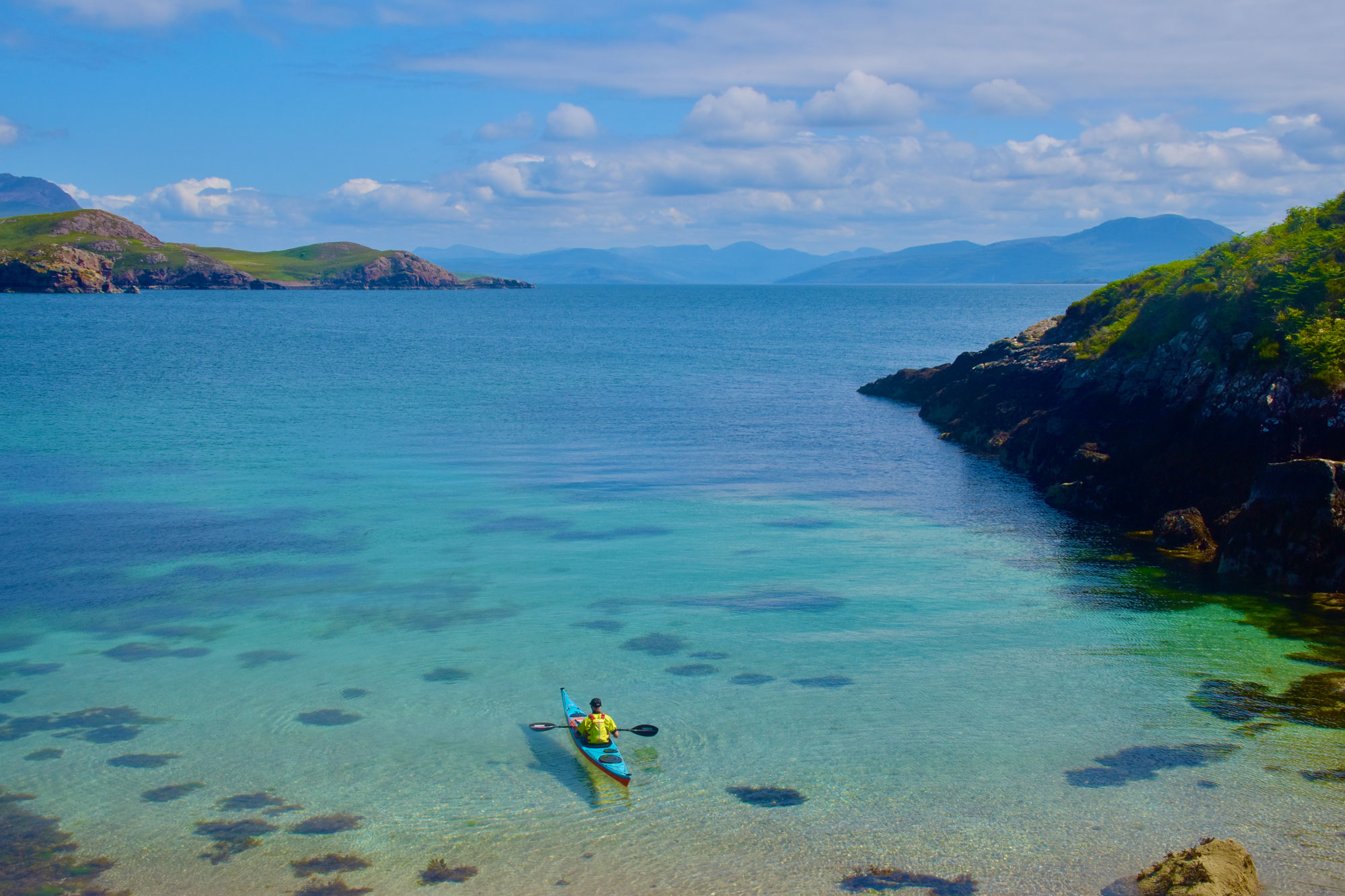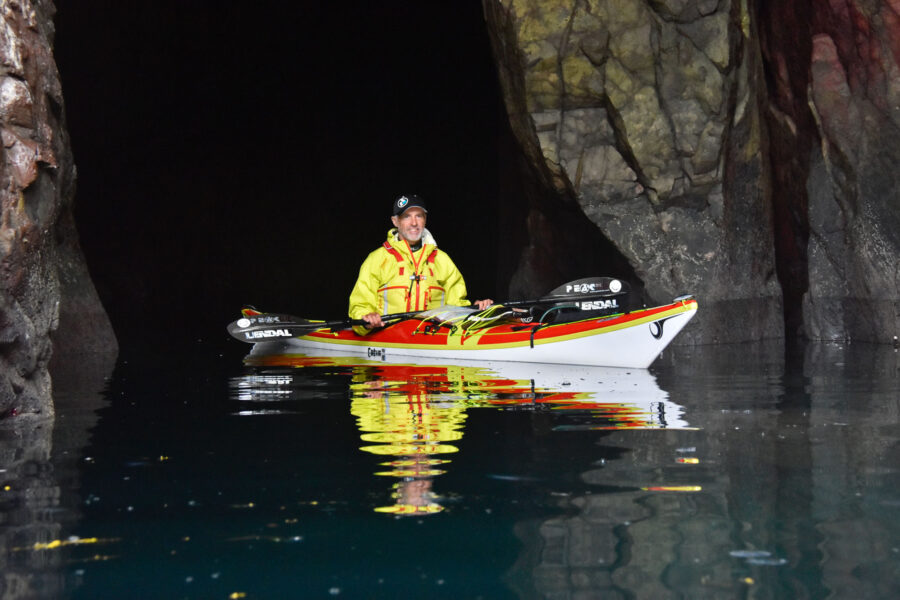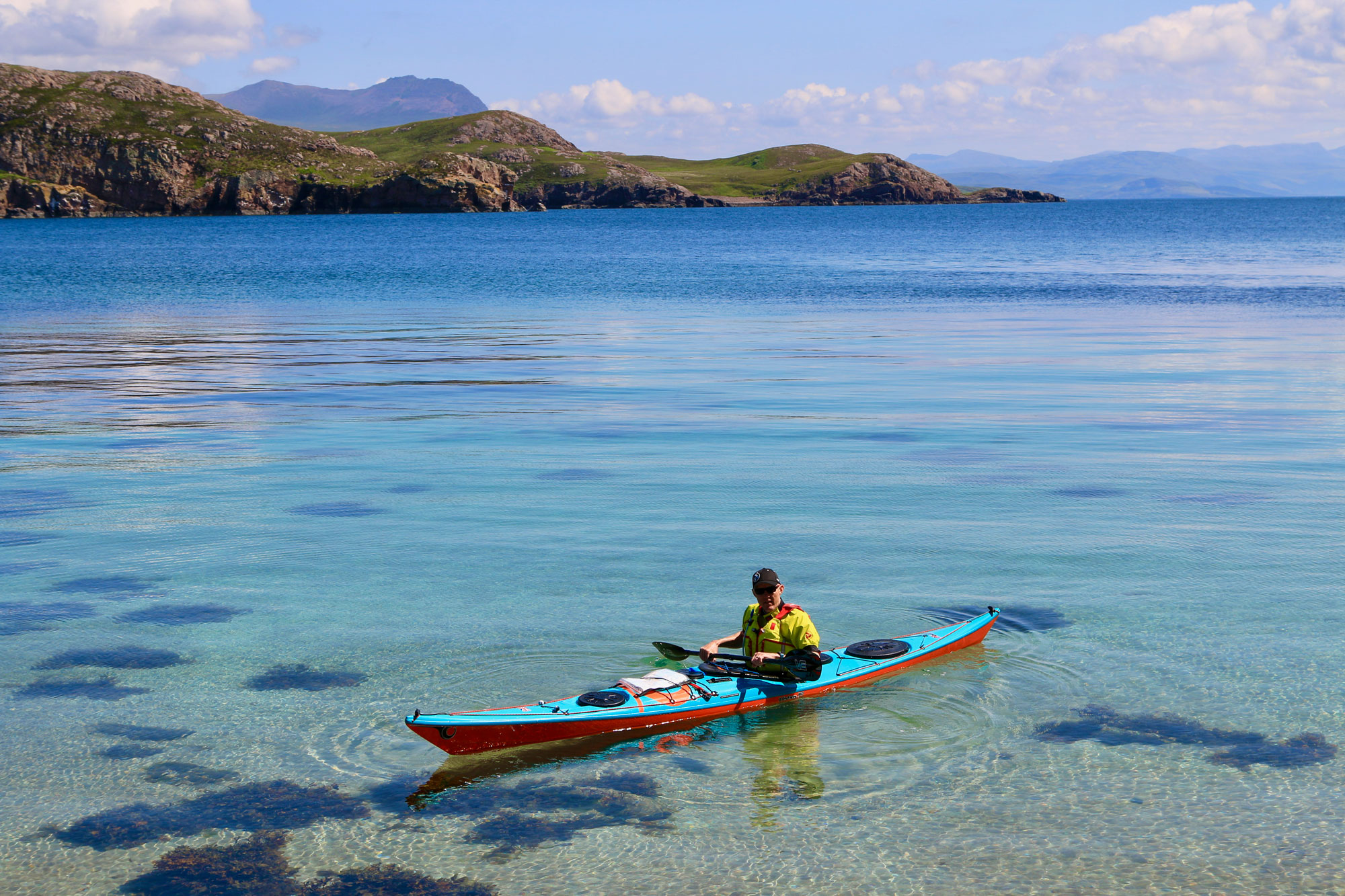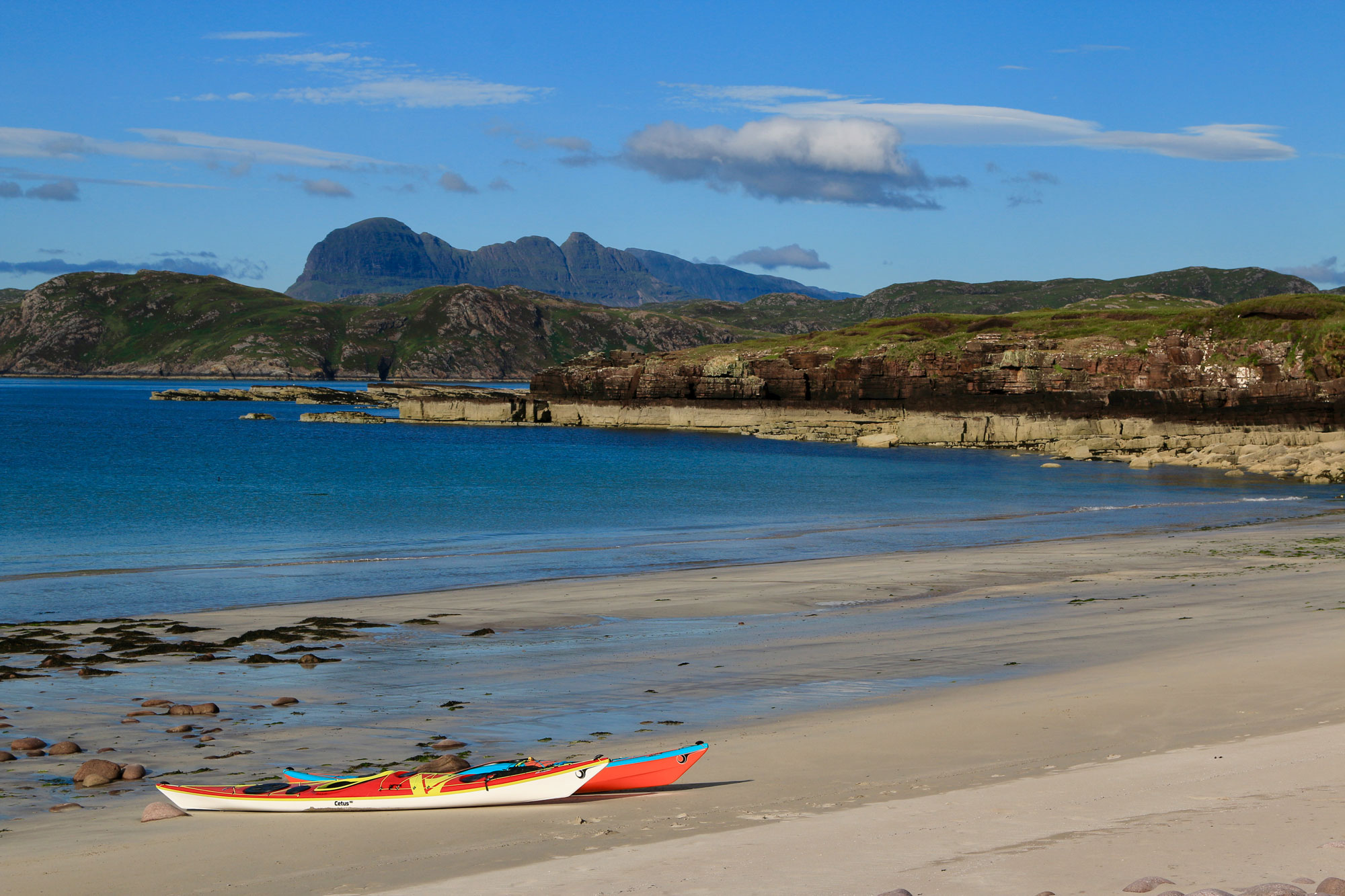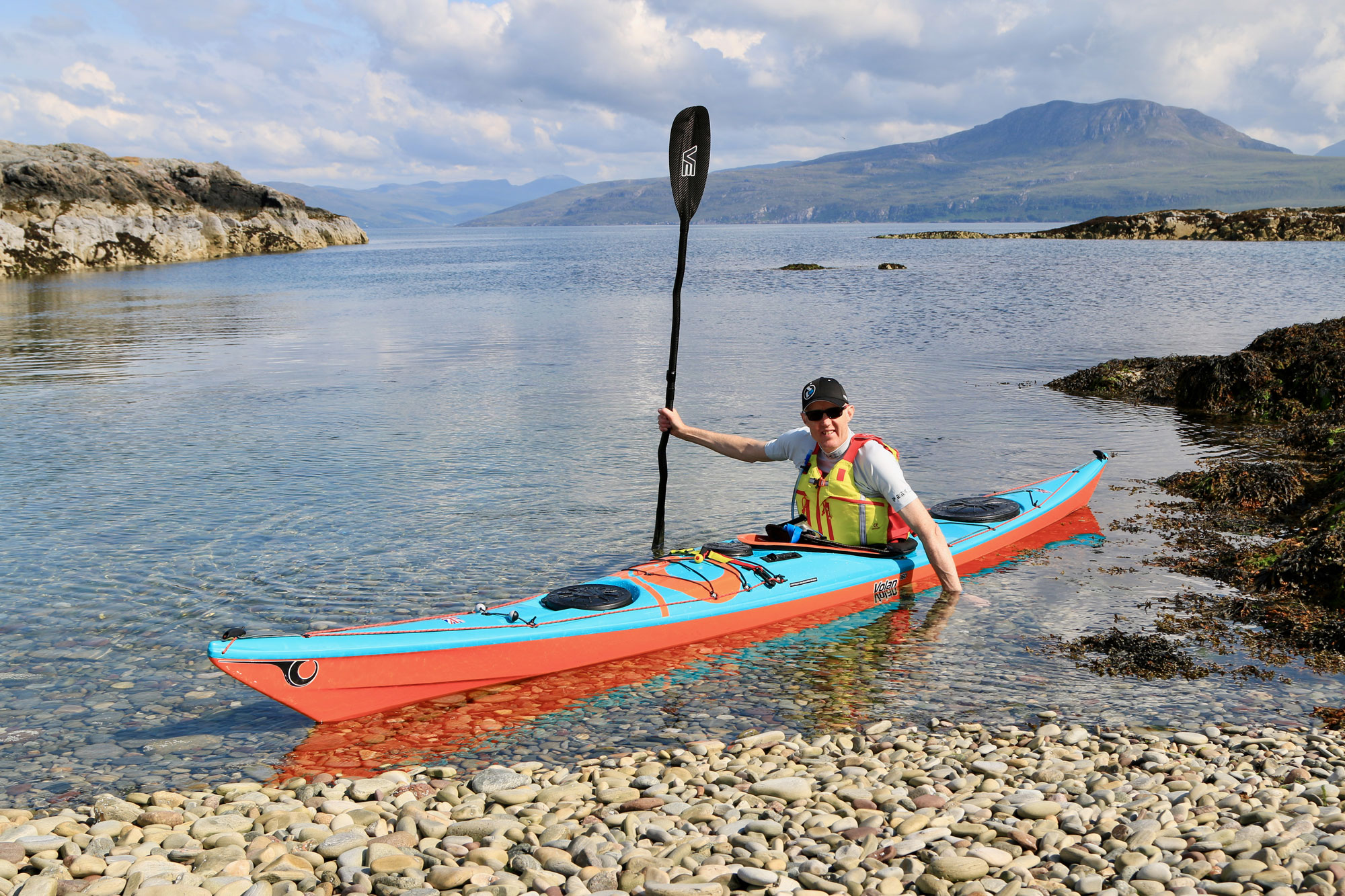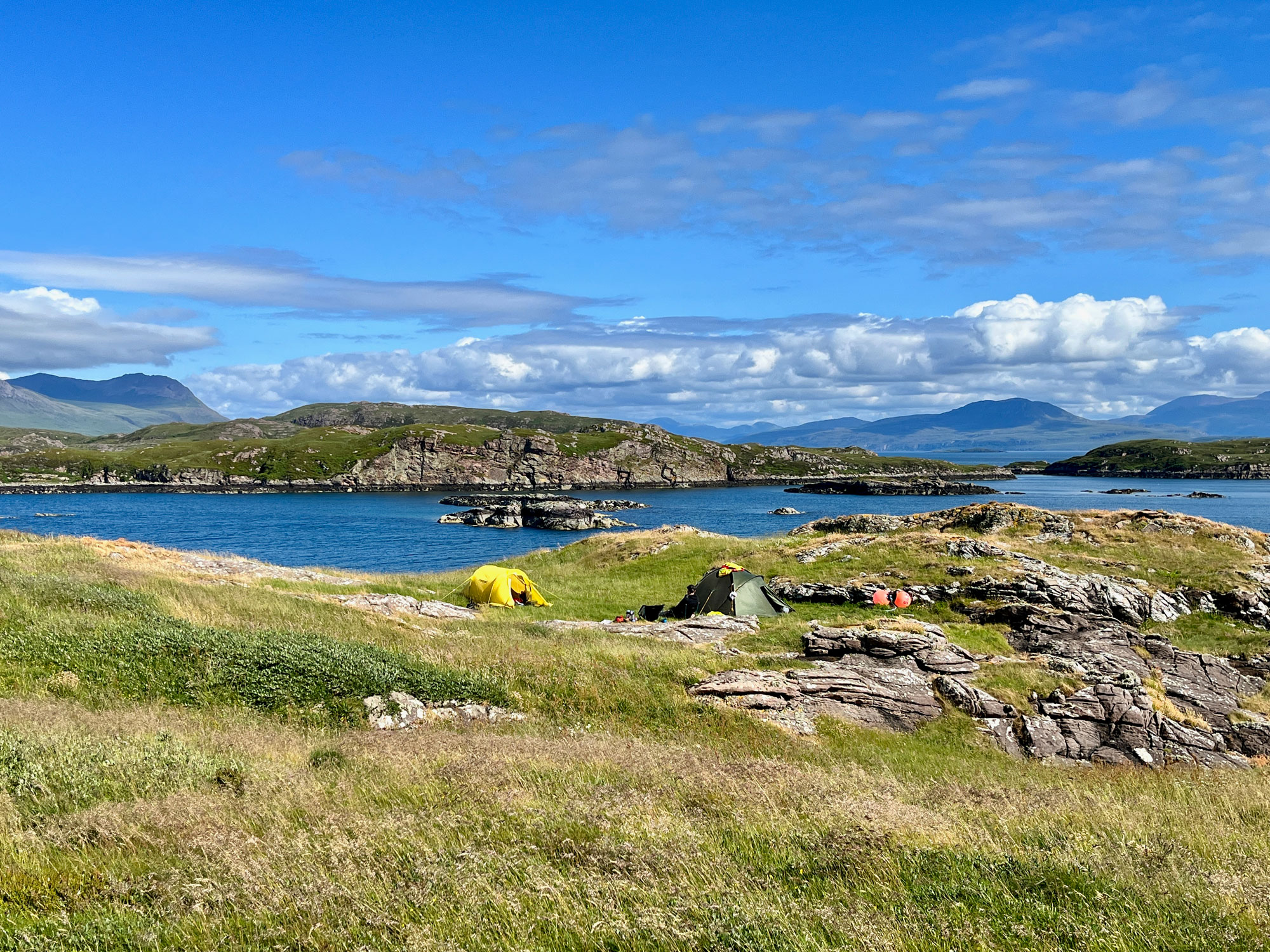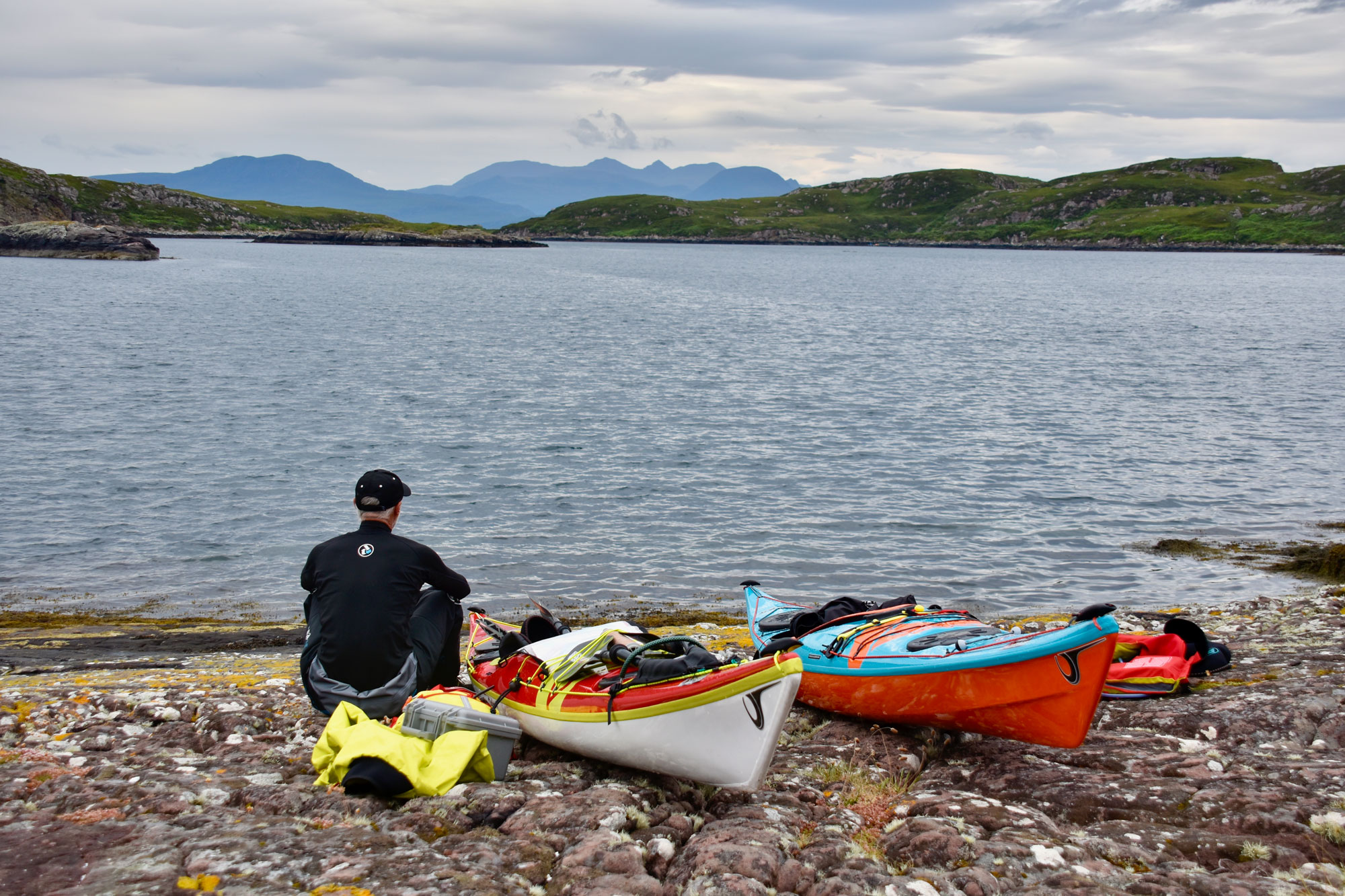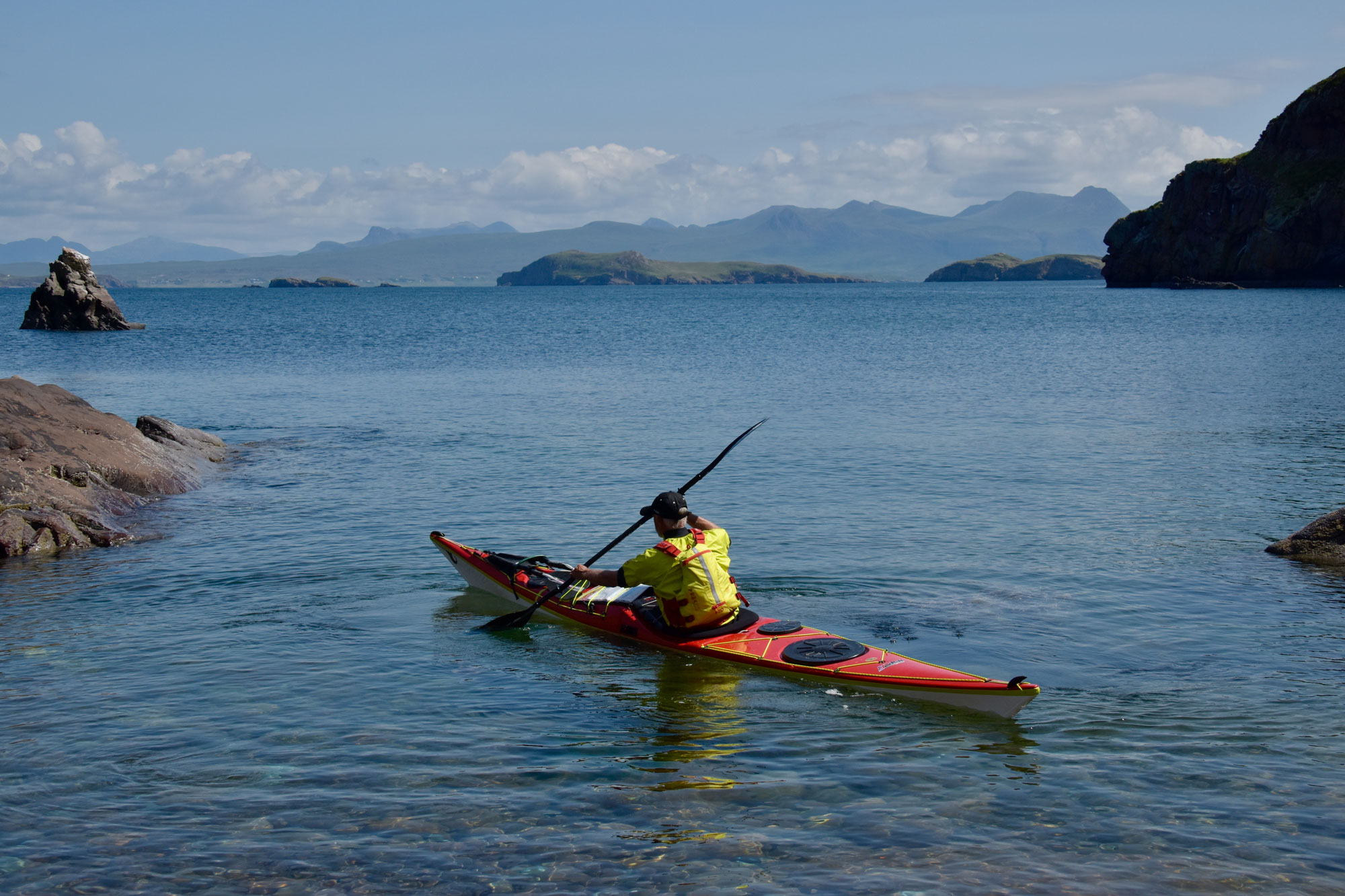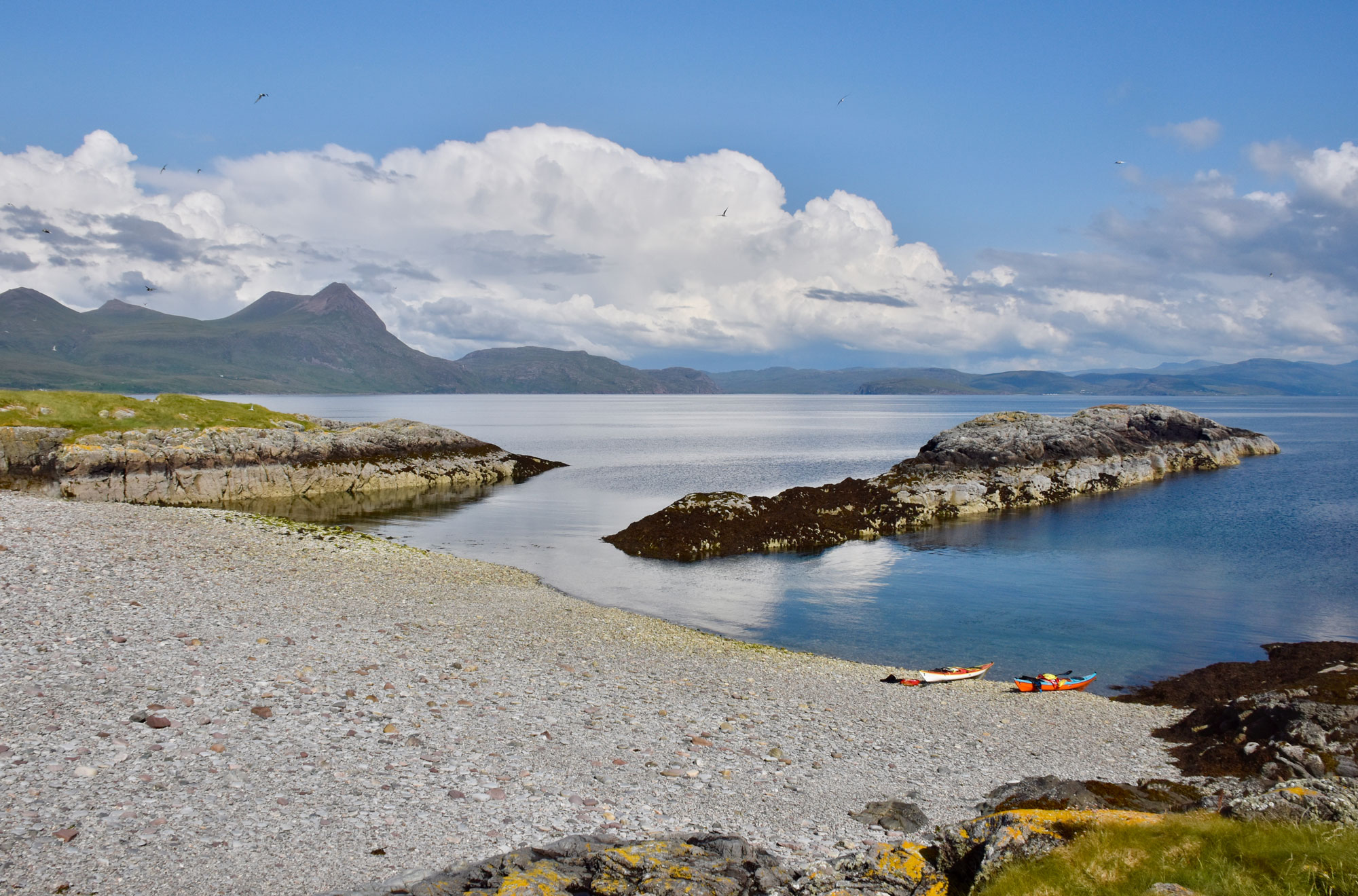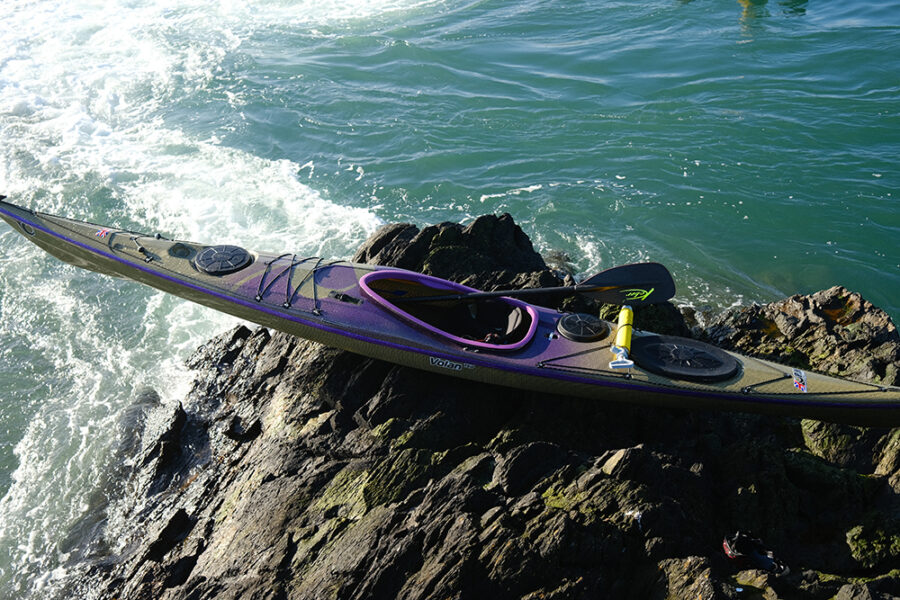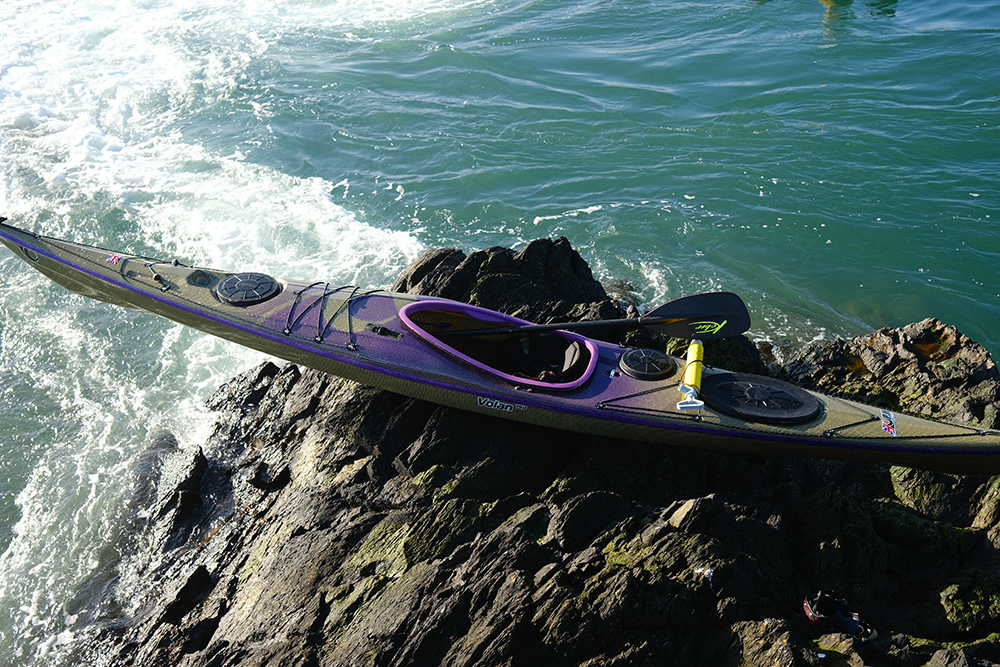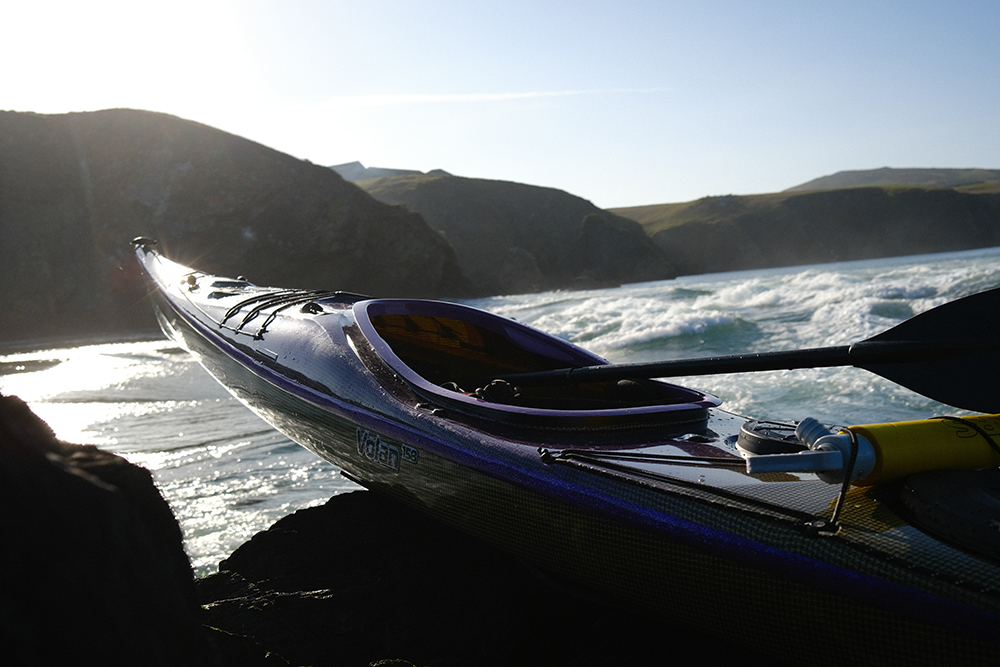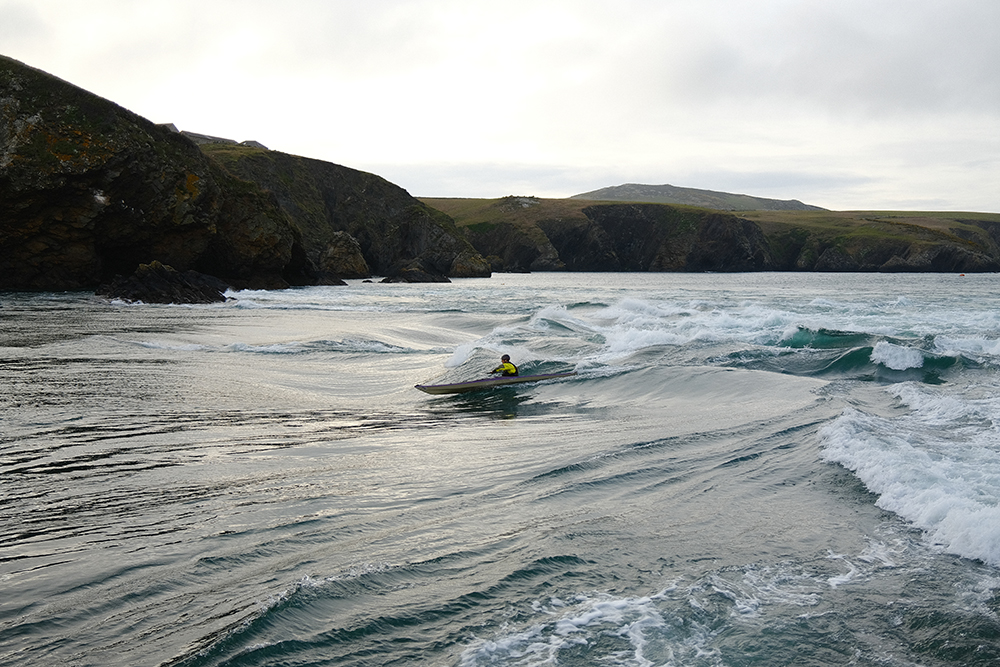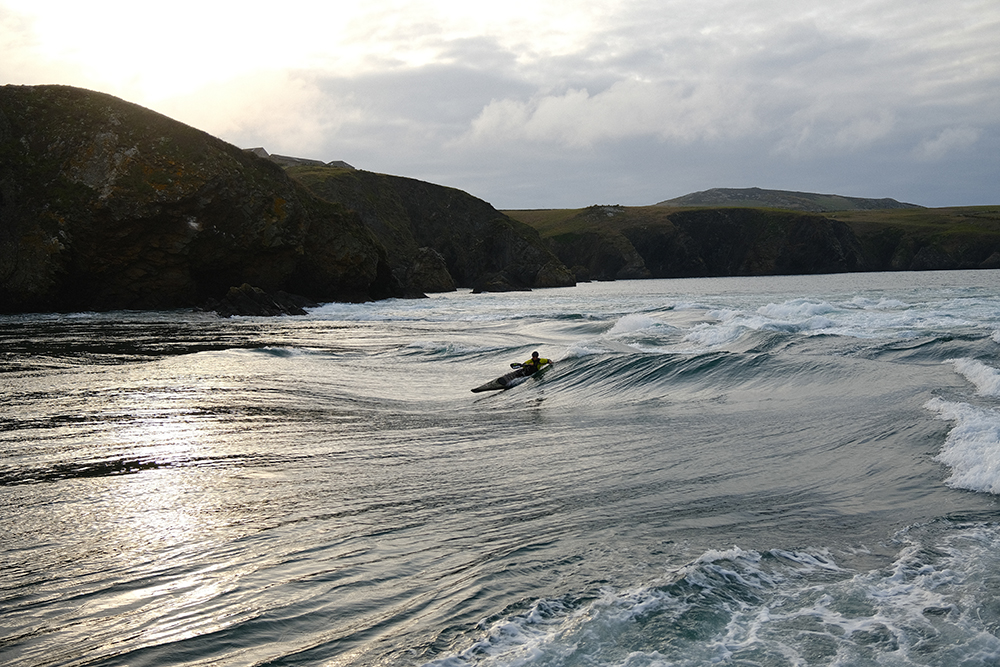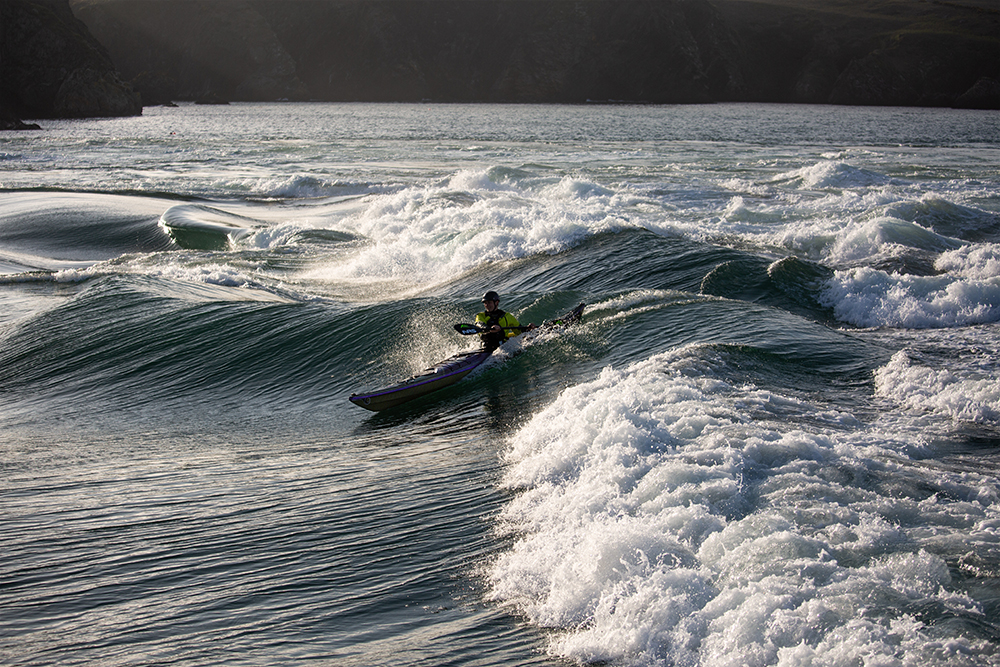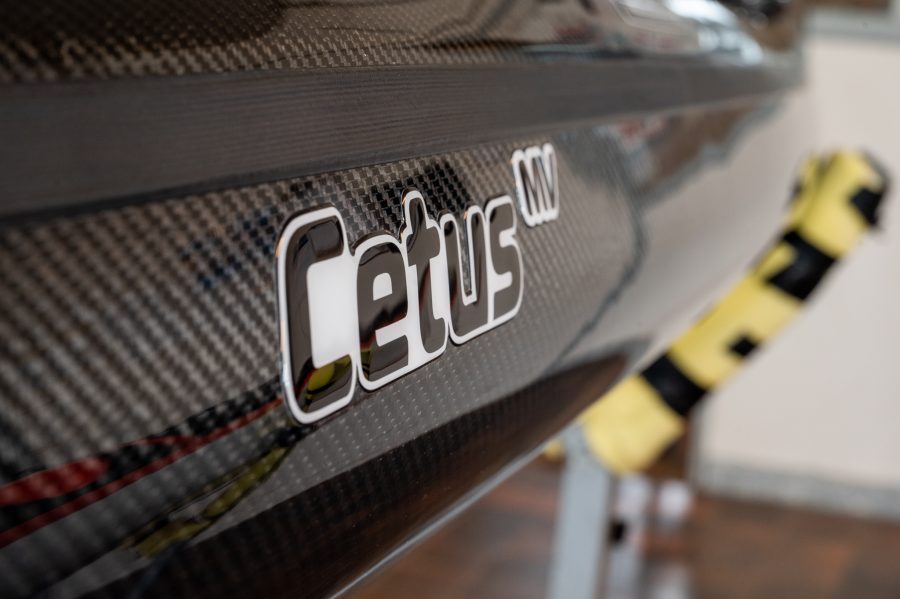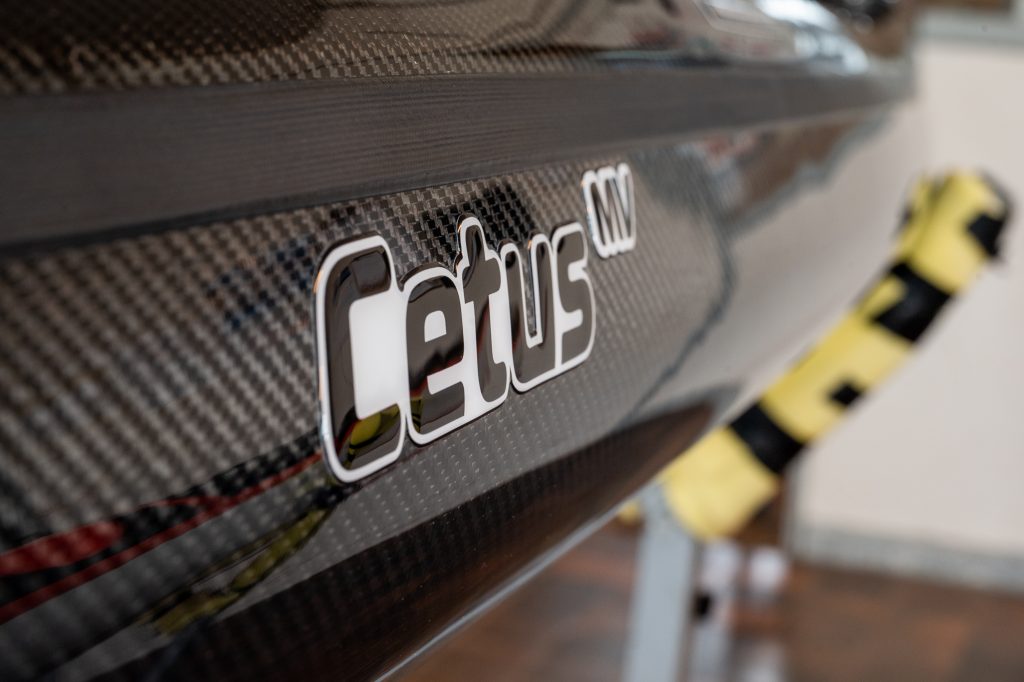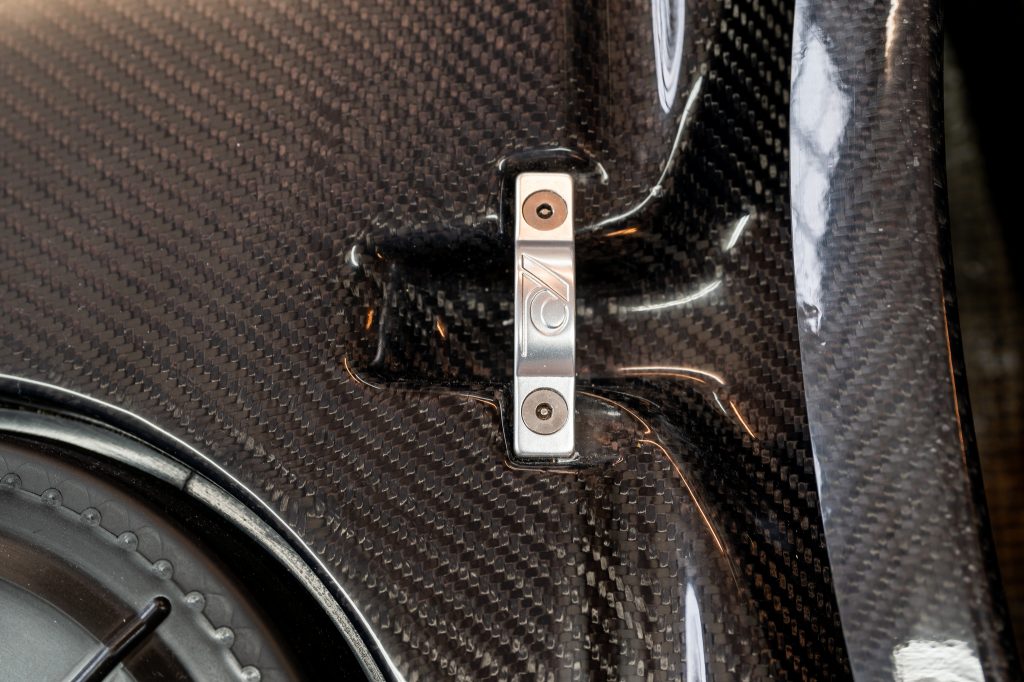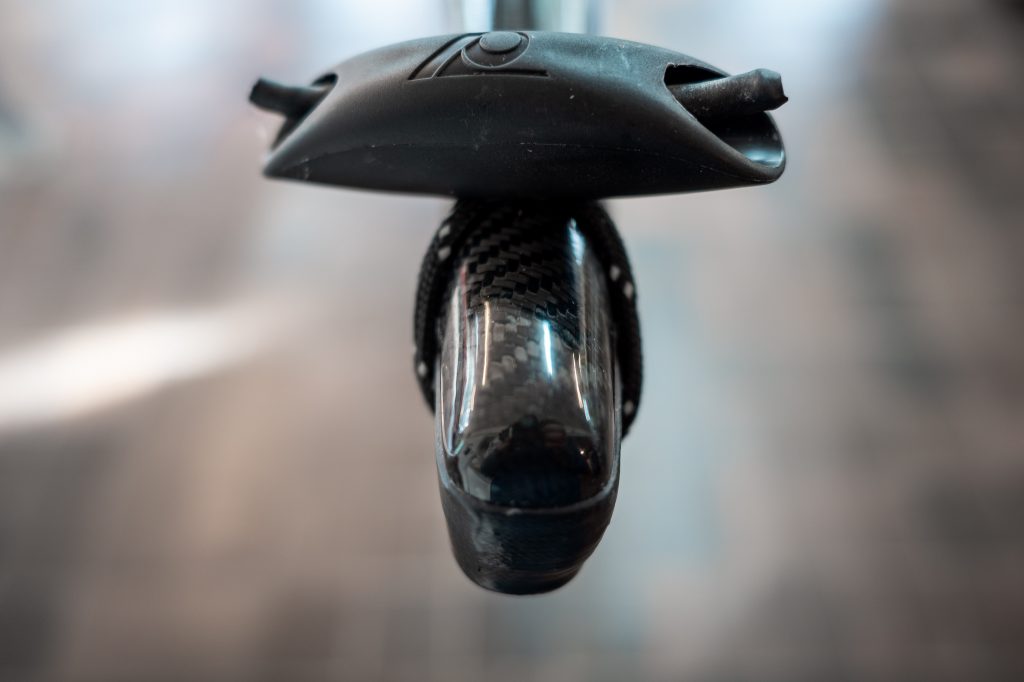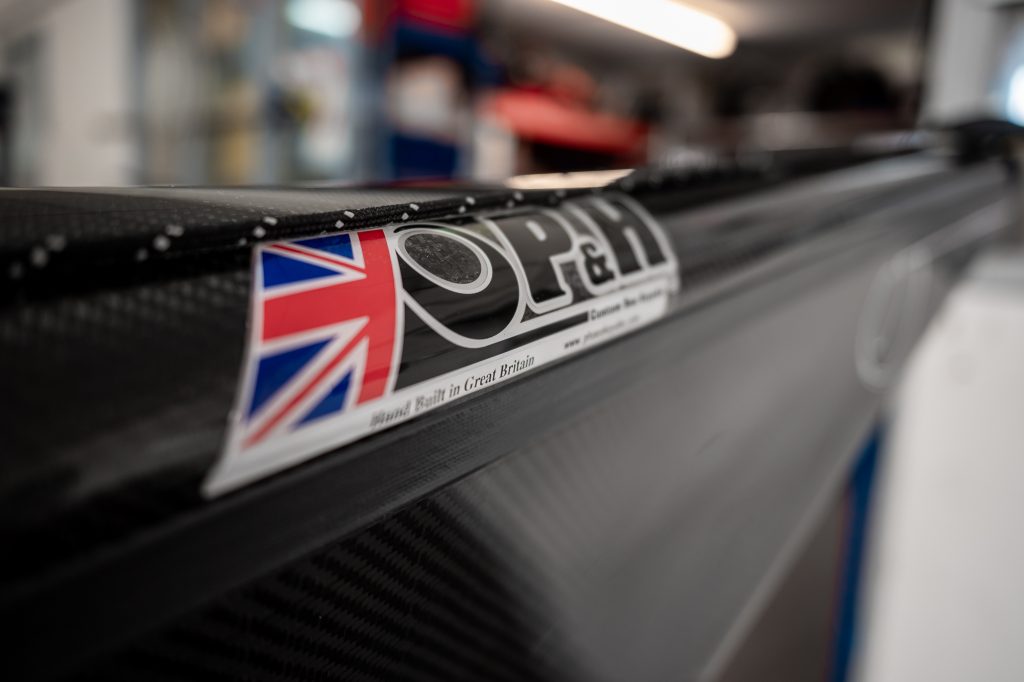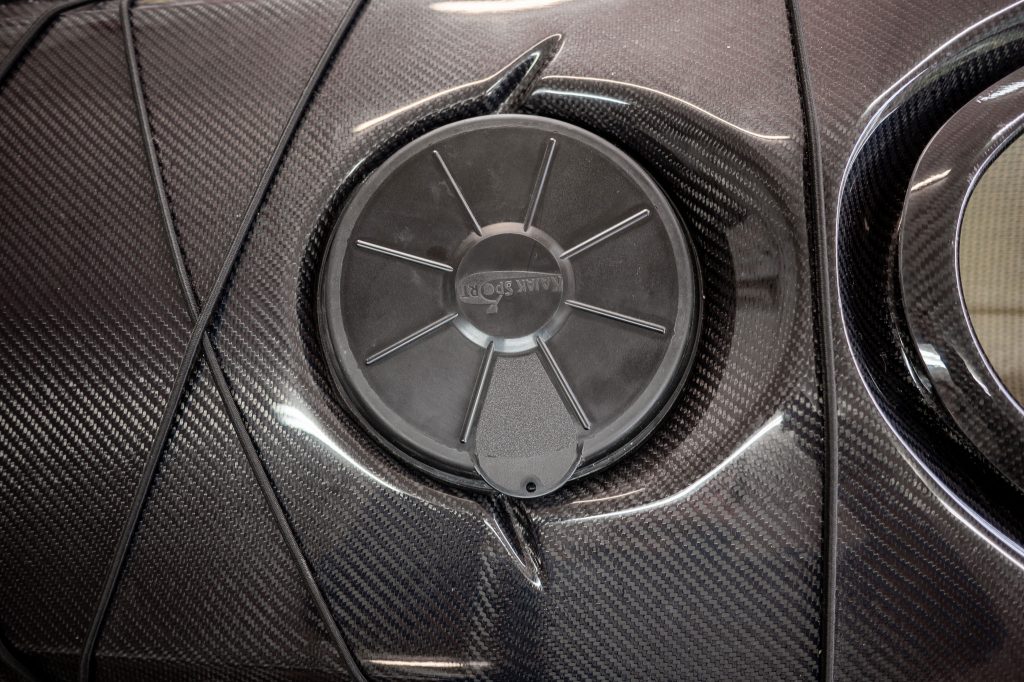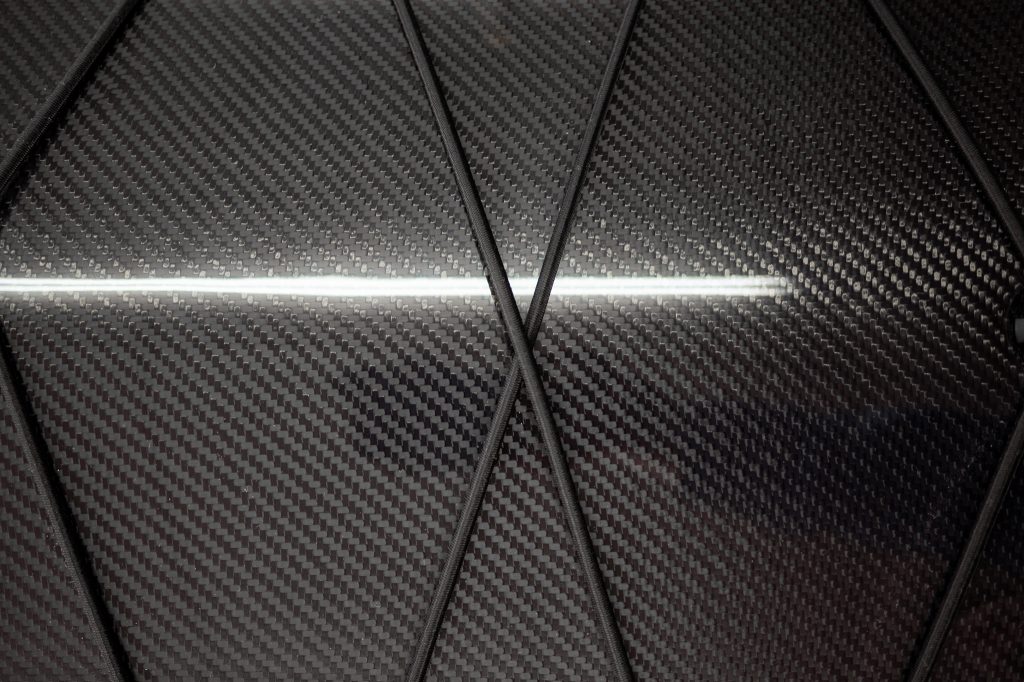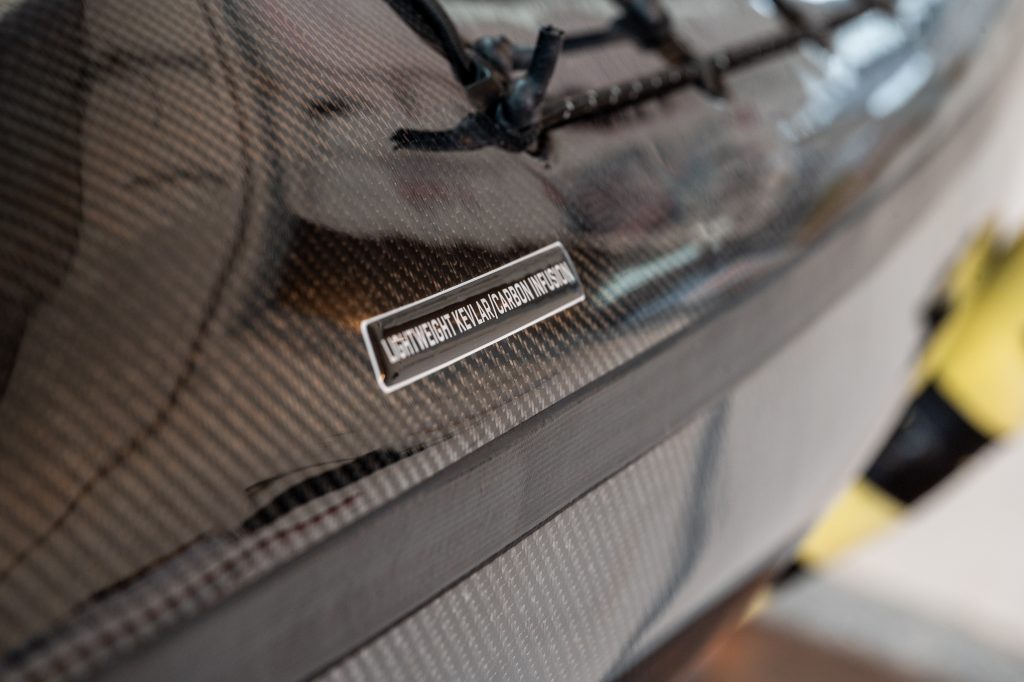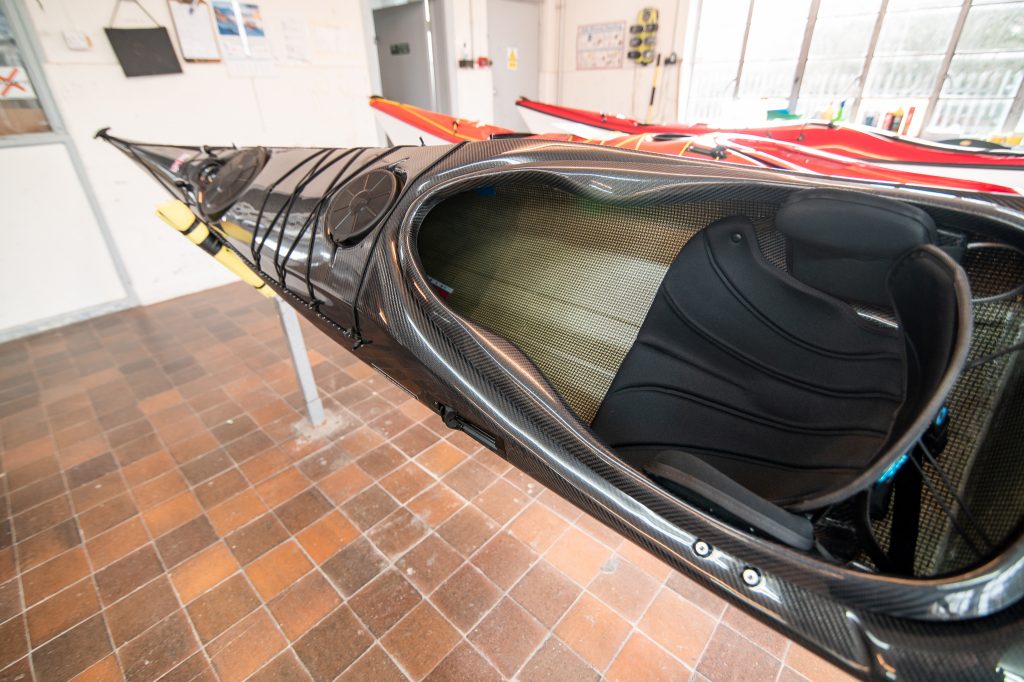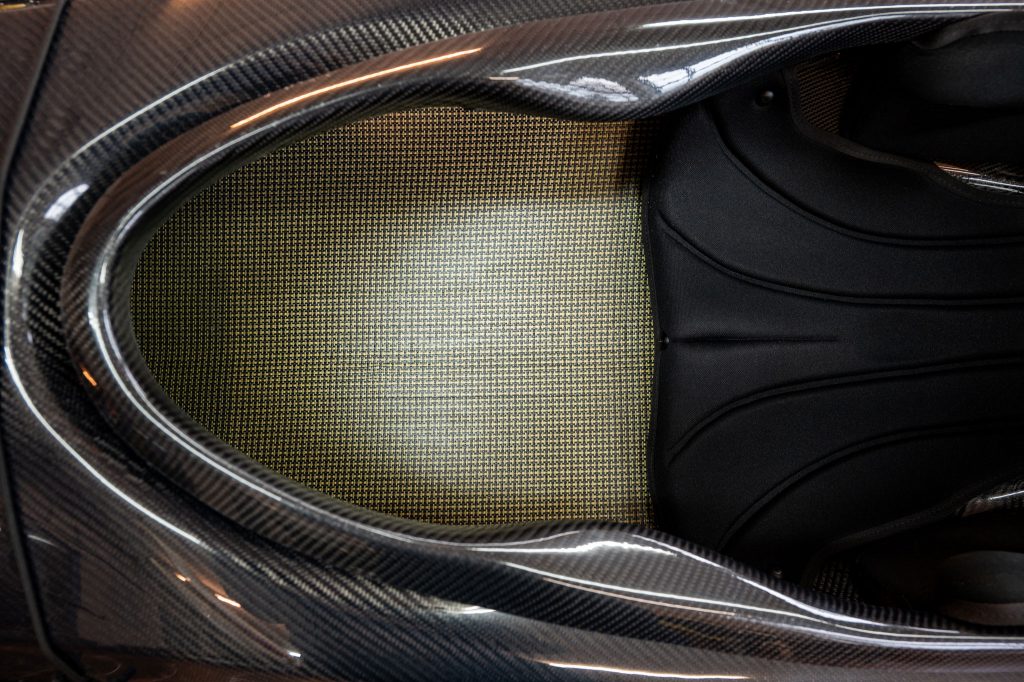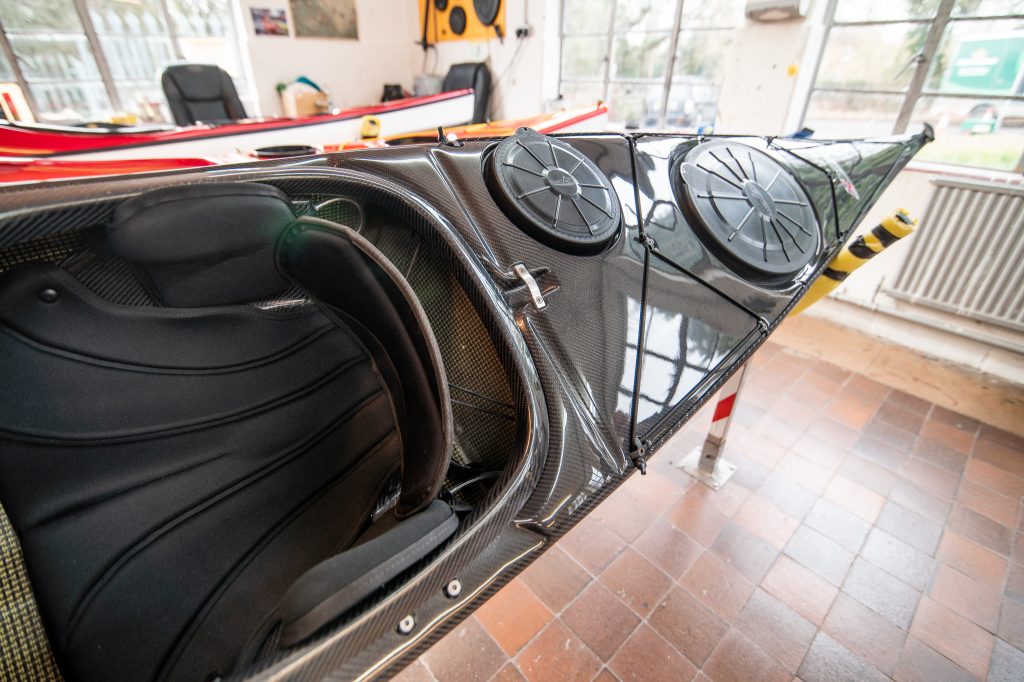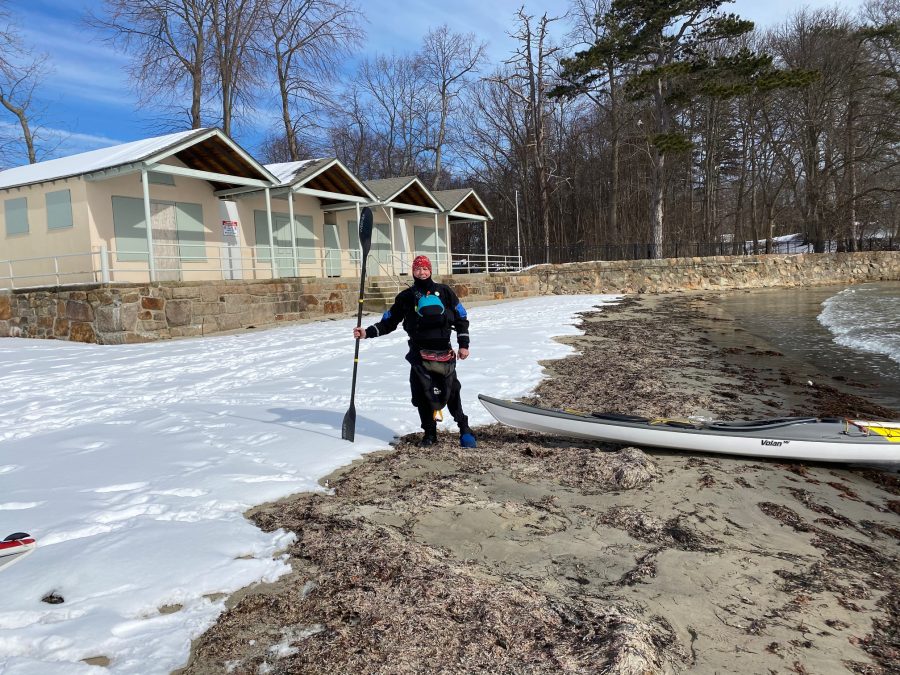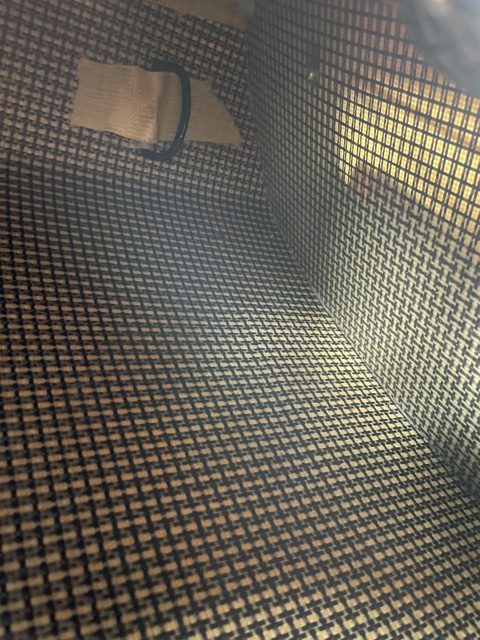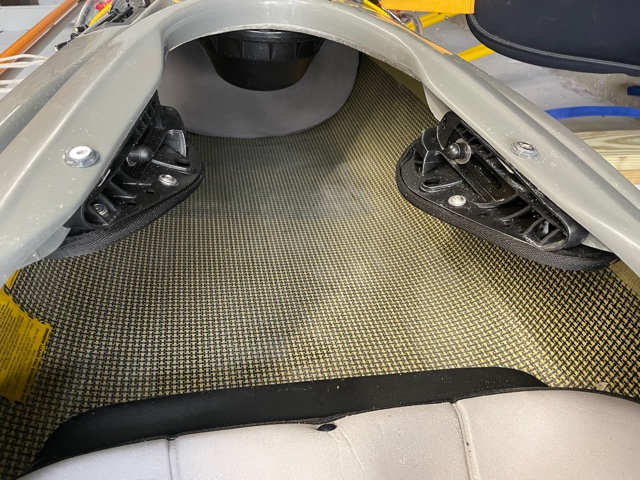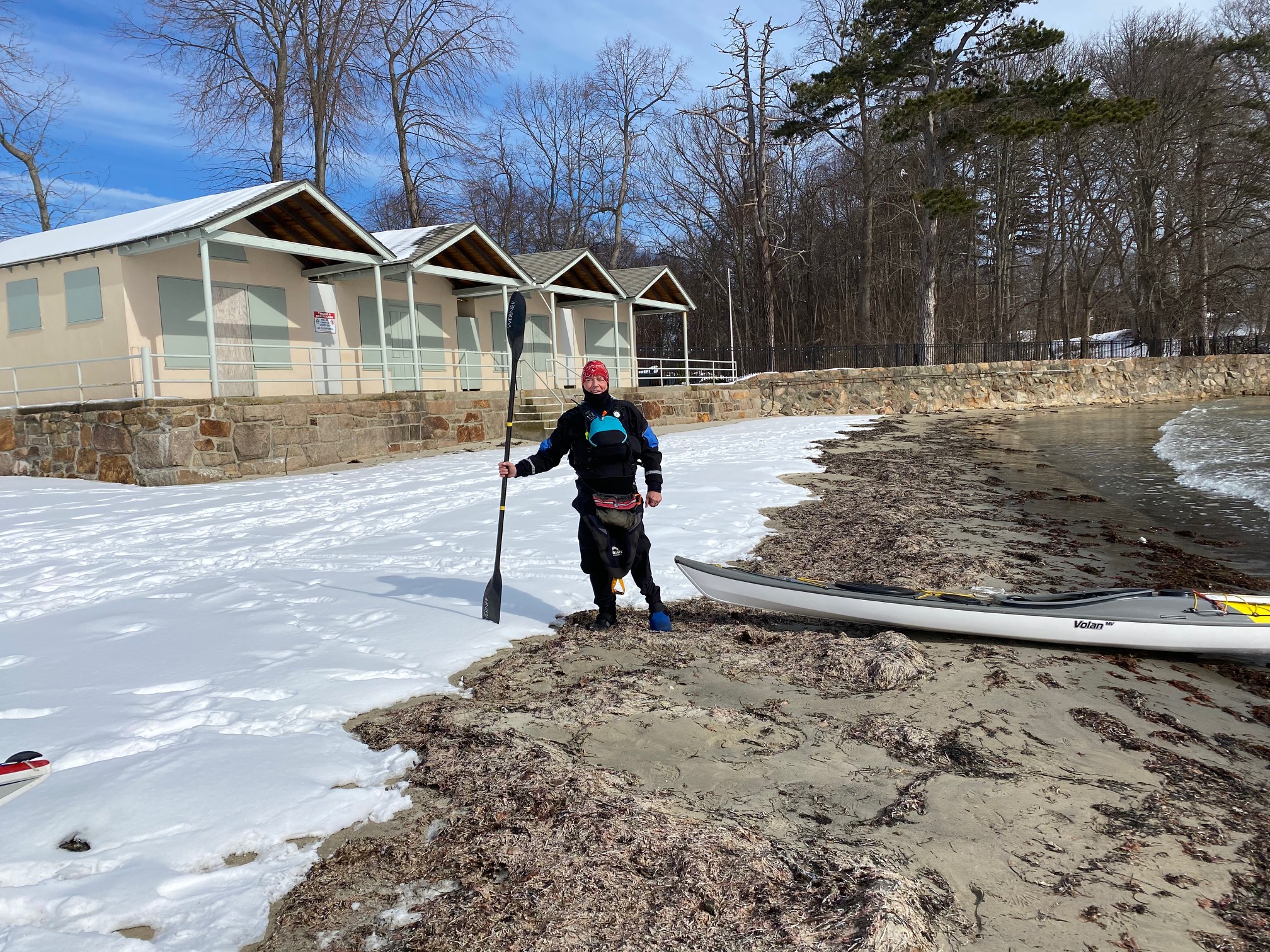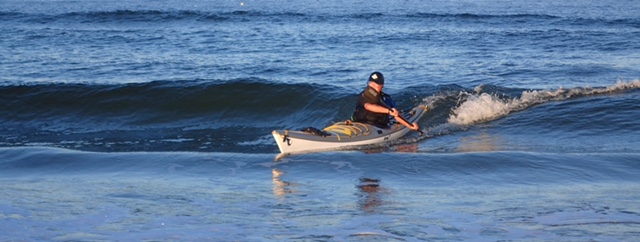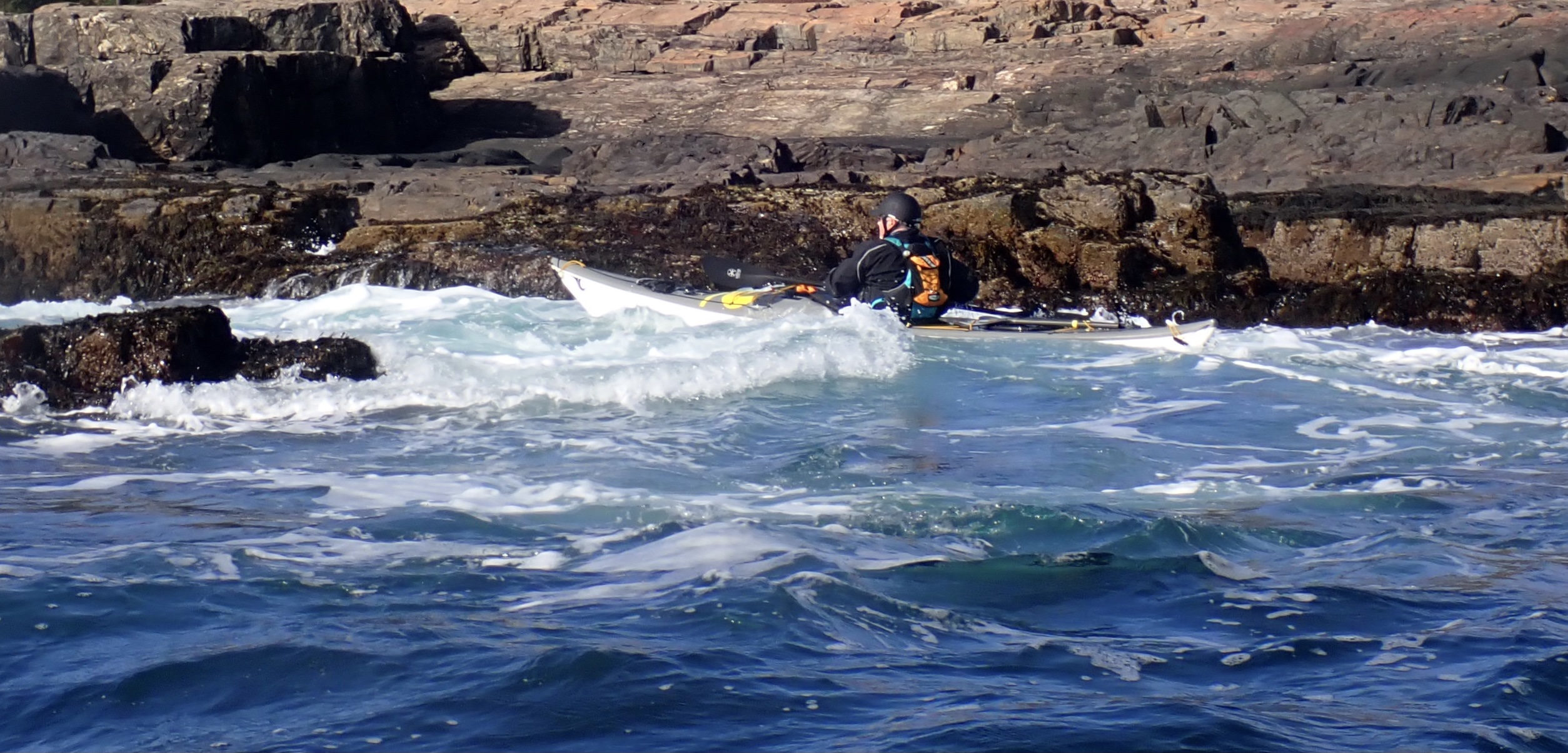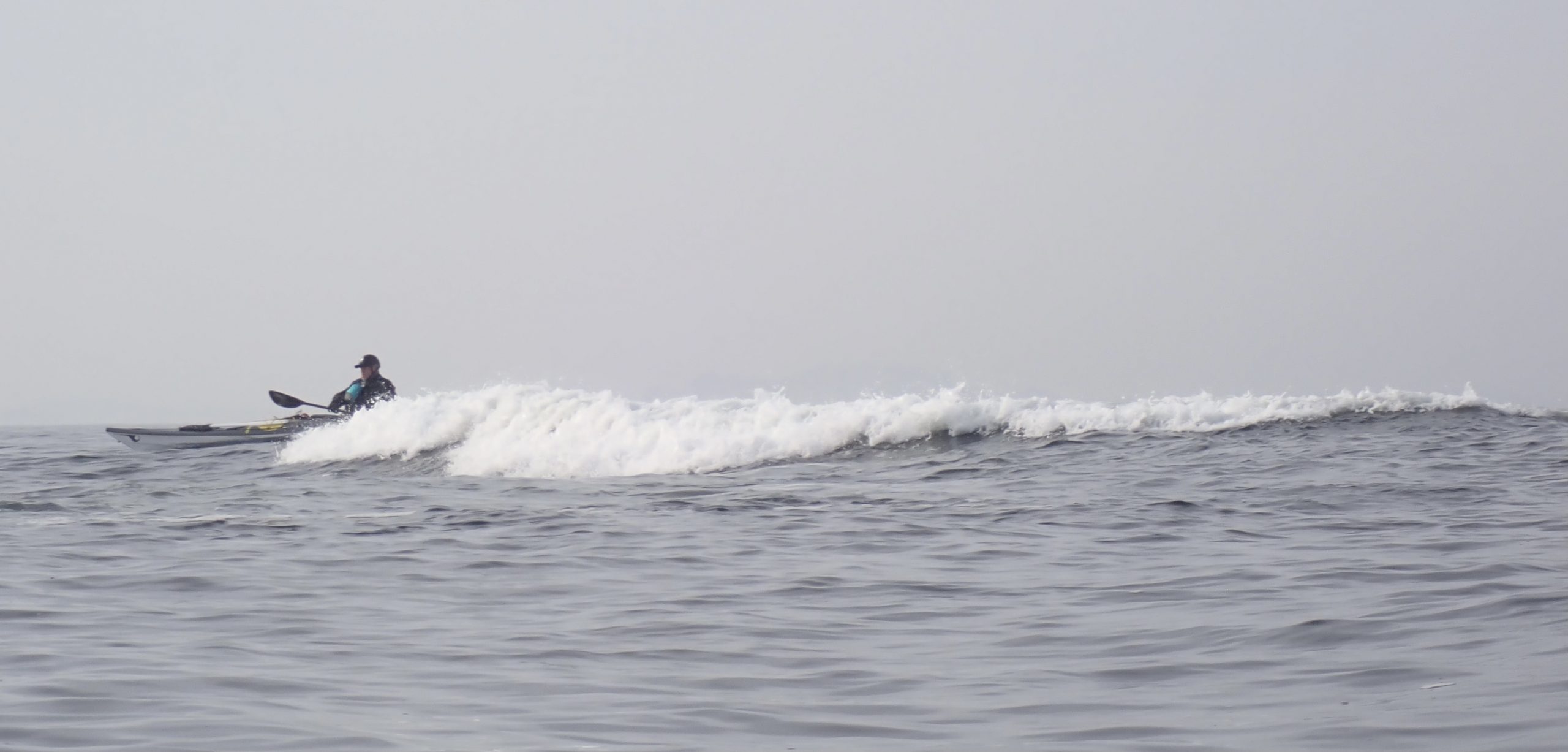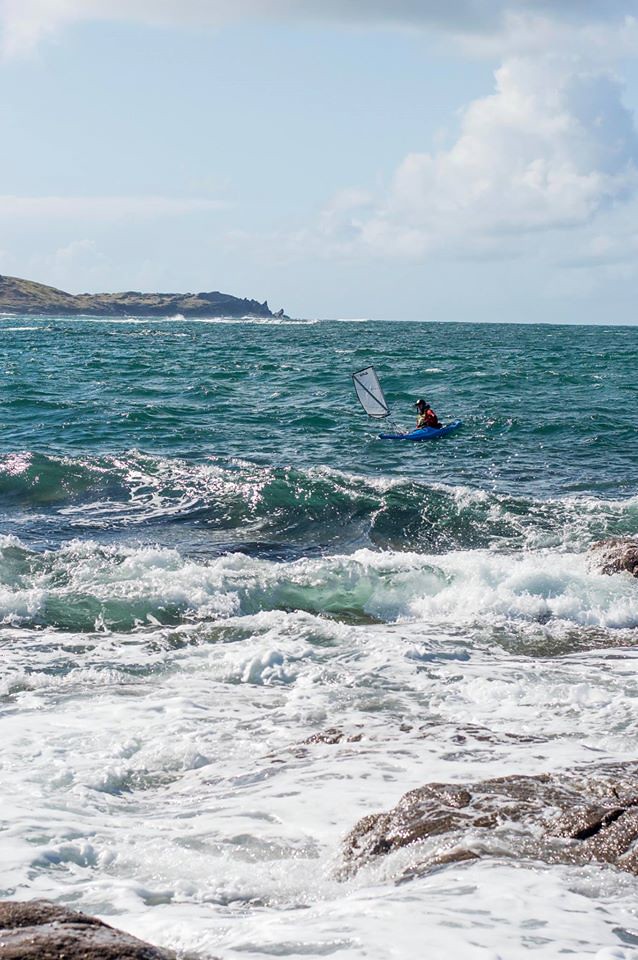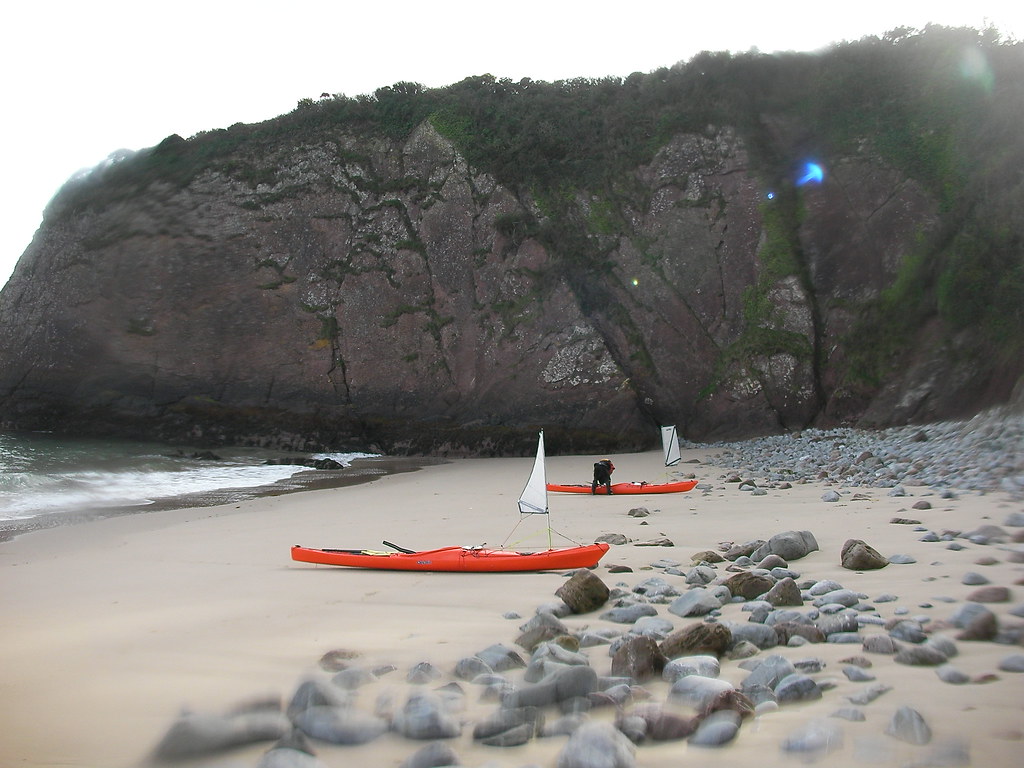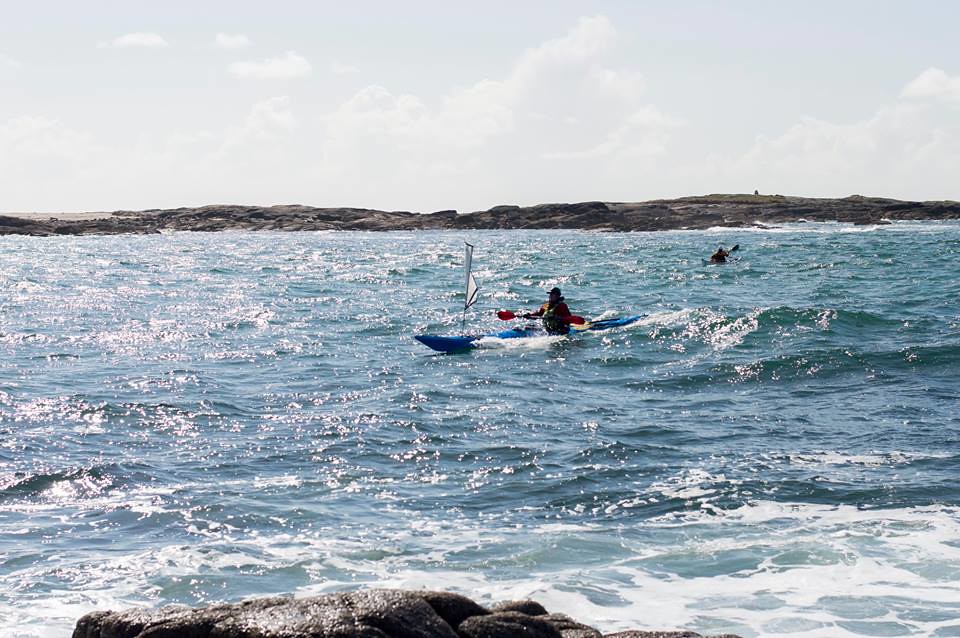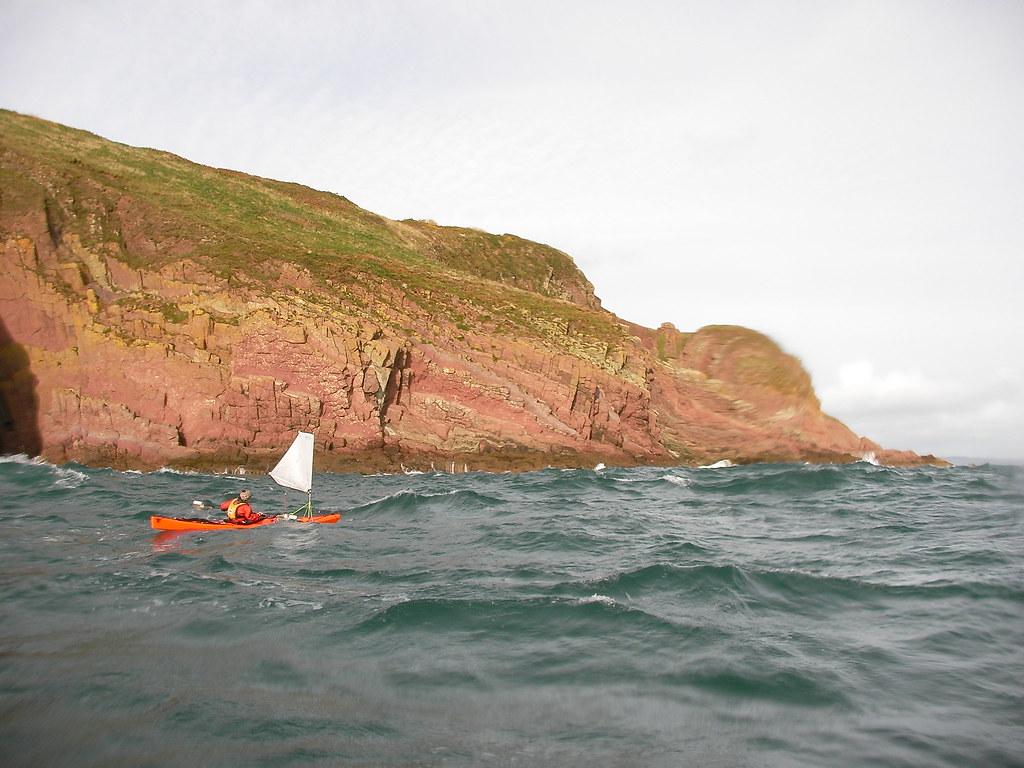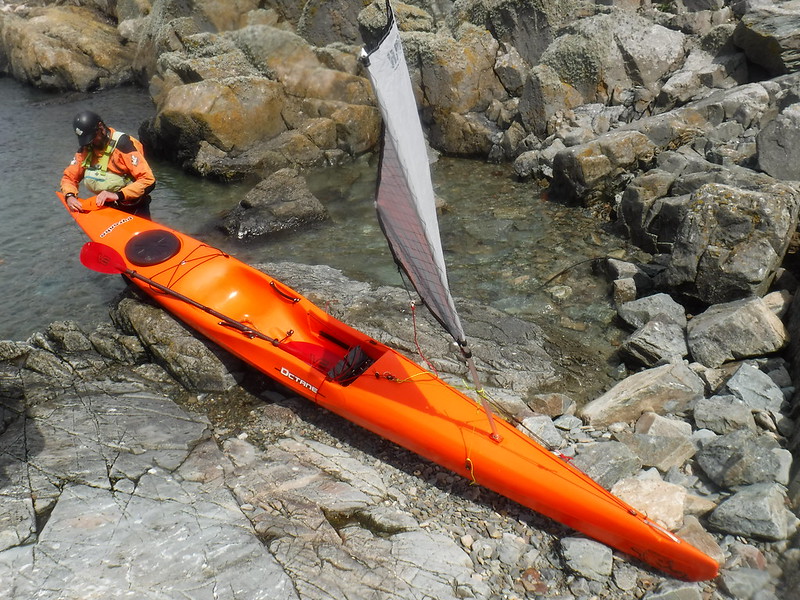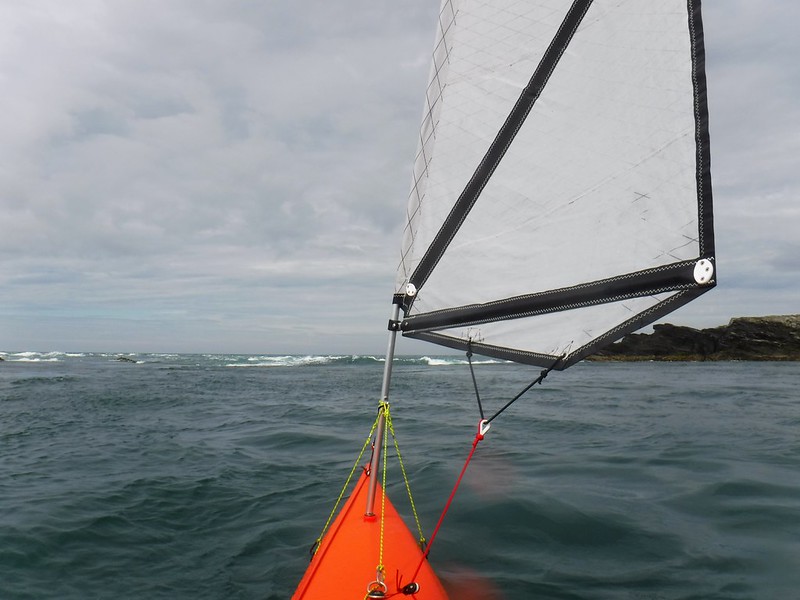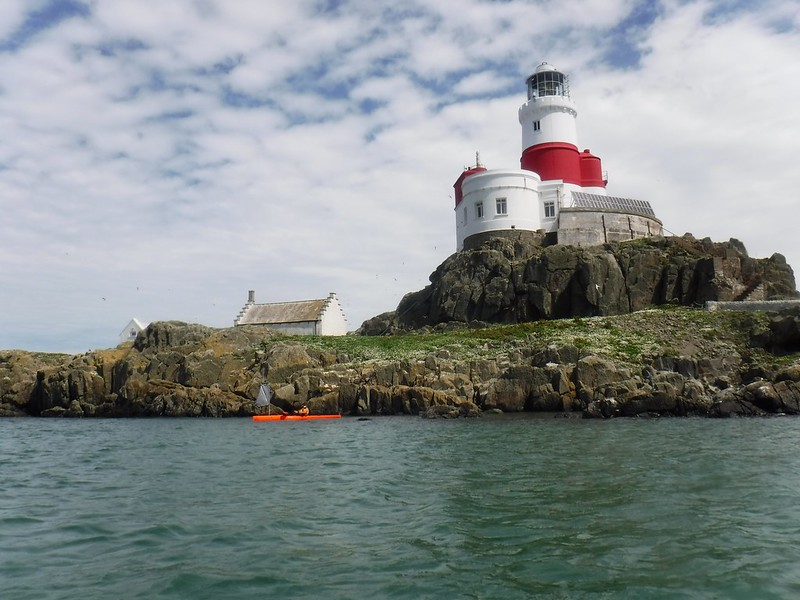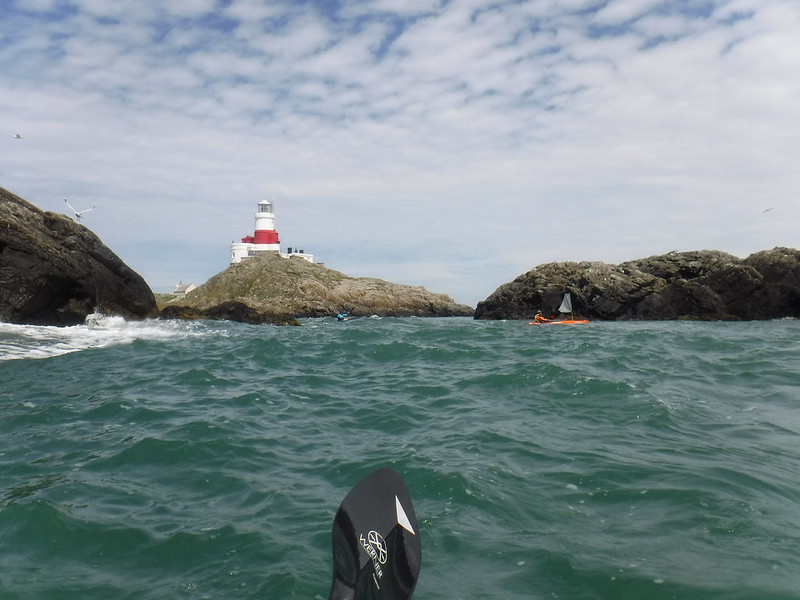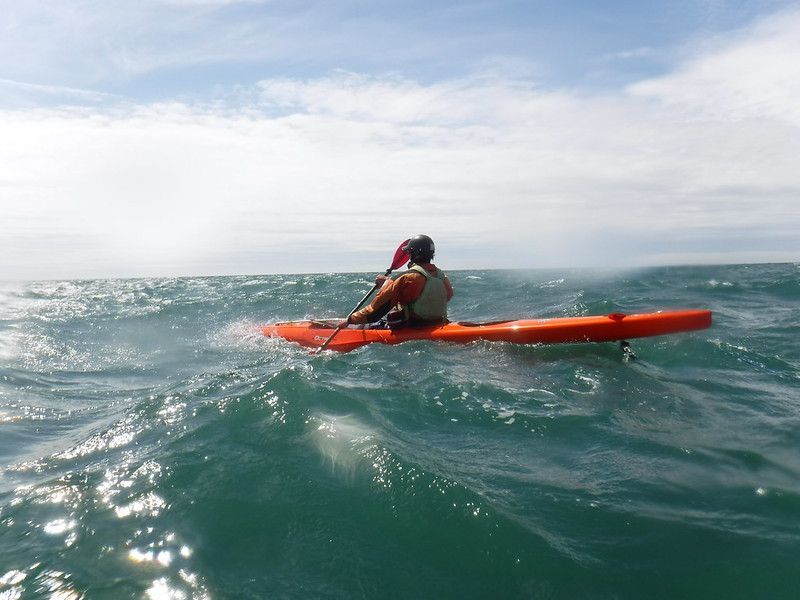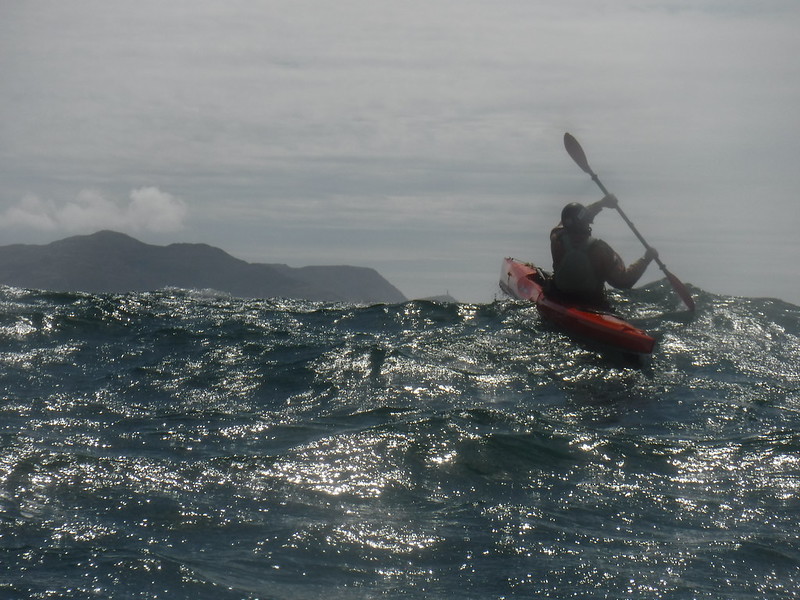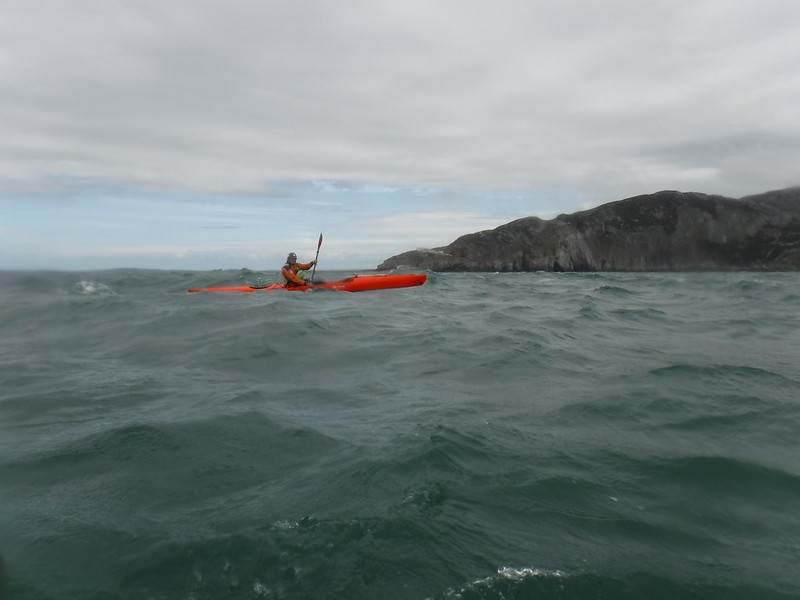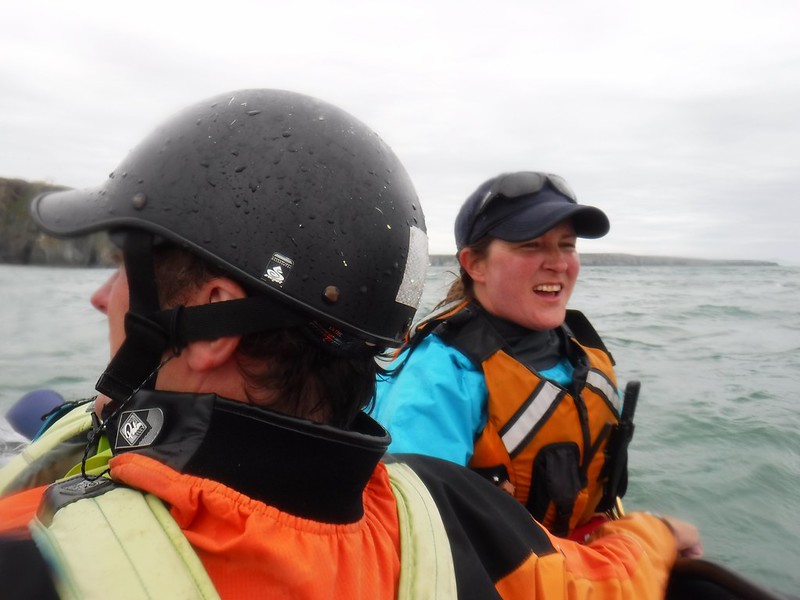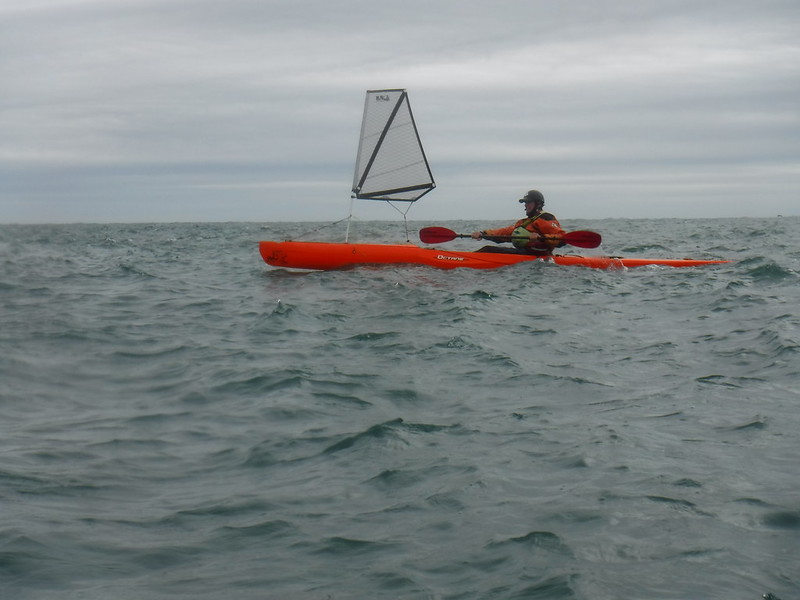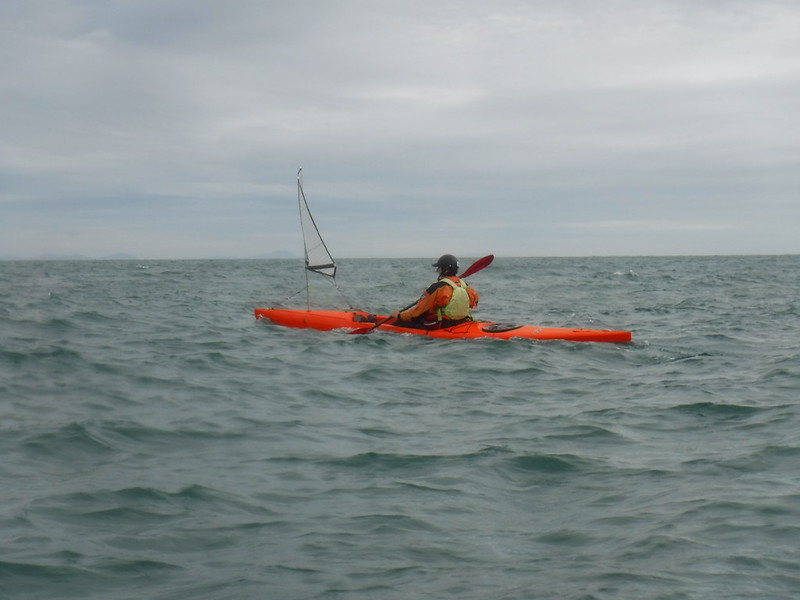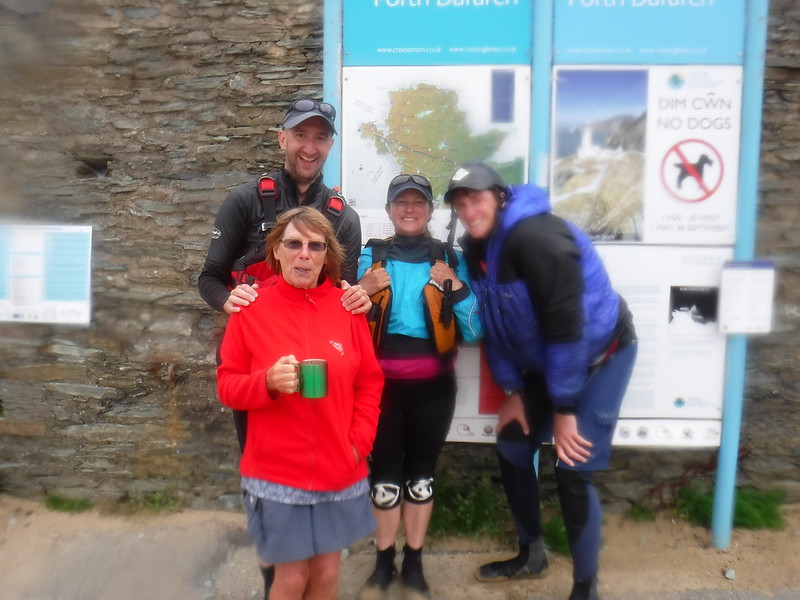Paddler Age, Height, and Weight: 49 years old, 167 cm, 57 kg
Boat colour and name: Lizard Green, Sweet Jasmine of the Seas
I was lucky enough to be invited down to the Jurassic Coast to paddle with Sea Kayak Dorset for my maiden voyage with my new Virgo LV. On the drive down, with the boat on the roof of the car, I found a name that suited her: ‘Sweet Jasmine of the Seas’, or ‘Jasmine’ for short. I had not been out kayaking on the sea for more than 35 years. Back then, the boats we had were £5 boats, so they were not the best, but they got me out on the water in S.W. Devon. What a difference paddling Sweet Jasmine made!
Our first paddle together took us through Durdle’s Door, into caves, and a spot of rock hopping. The weather was calm and warm, and the group was small, all of which gave me time to get to know Jasmine better. I only needed to make small seat adjustments en route, which made a big difference to my posture and comfort, feeling engaged and supported. Her short length and supportive edge allowed me to gather confidence quickly, and I started to play and experiment whilst rock hopping. The day was over too soon, and on the drive home I was left wanting more; I am sure that Sweet Jasmine of the Seas wanted to be back in the water where she belongs.
An email a few days later from Paul Hurrell, founder of Sea Kayak Dorset, brought me great joy: two more days out on the sea for a Sea Kayak Leadership training course, with a different group, different conditions, and a lot more challenging. I was almost up for it, but first I had to make adjustments to the knee braces and find myself a set of paddles more suitable for the boat.
I did not know what to expect. I was still trying to find my balance, find my sea legs… It was windy, and I was unsure of how I would perform. I didn’t know how Jasmine would behave in racing tides and crashing waves and with wind against tide surfing conditions. But with a strong group of nine paddlers setting out to practice and support each other, it was easy and enjoyable enough in the end.
Even though I am a fairly new paddler, I found it easy to feel the boat and relax on the water just by tweaking the various cockpit adjustments. I felt an increased connectivity with my boat, which gave me the confidence to rescue bigger paddlers and boats in active waters. Jasmine’s stability allowed me to dash into caves and between rocks and to quickly and efficiently manoeuvre out of danger. On a few occasions, I found myself swimming alongside Jasmine, and self-rescues became second nature by the end of the day.
The Virgo LV is not the longest sea kayak on the market, so it has limited storage space. None of this mattered. Despite her length, Jasmine is not a slow boat; with a clean technique and a good set of paddles, I was able to match and keep up with the longer boats easily. Its shortened length meant that adjusting my body position had more effect on the trim of the boat, allowing me to catch and grip the waves; the speed and thrill of the ride were exhilarating! On the other hand, I was still able to fit all my gear in comfortably with room to spare, which means longer adventures await.
Am I planning on paddling to Spain to visit family or surf the giant Atlantic breakers off the Cornish coast in a Force 8 gale? Maybe, who knows? What I do know is that this boat fits me; I have a lot to learn, and she has a lot to offer. I think it will be many moons and many adventures before I grow out of her; in fact, I will probably grow too old first.
A big thank you to P&H for making a fun, playful, spirited sea kayak for the smaller paddler, and thank you to Sea Kayak Dorset for taking me out and pointing me in the direction of finding my solace.
